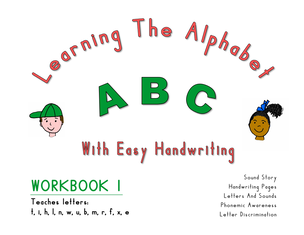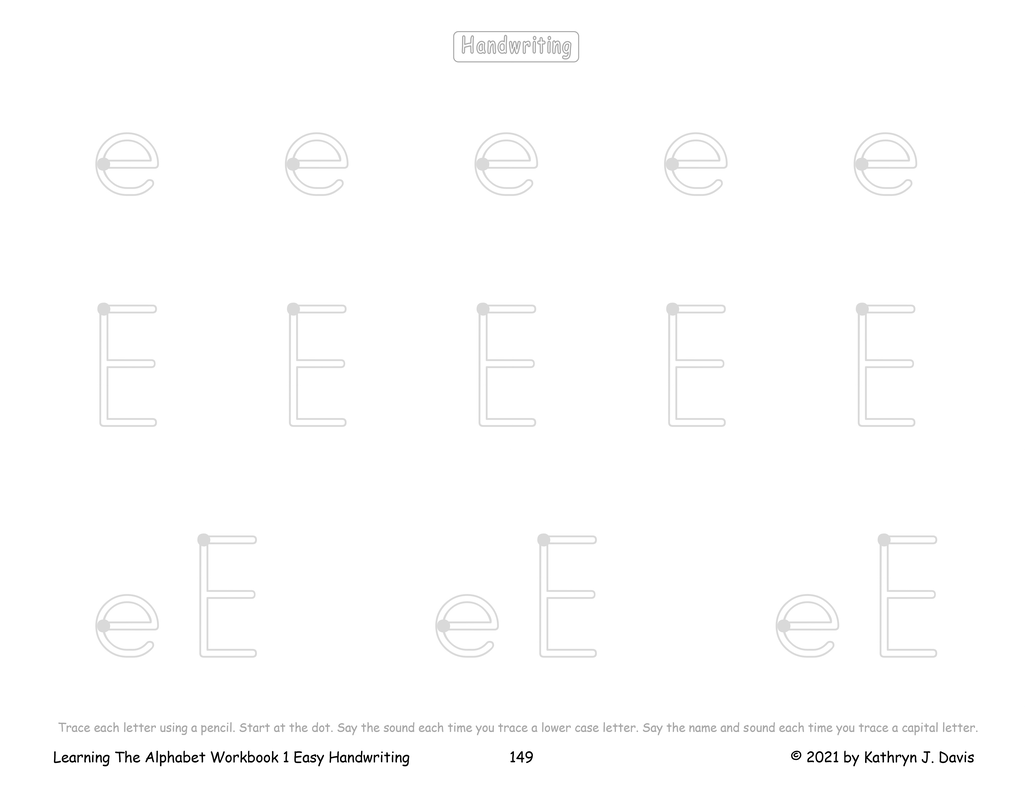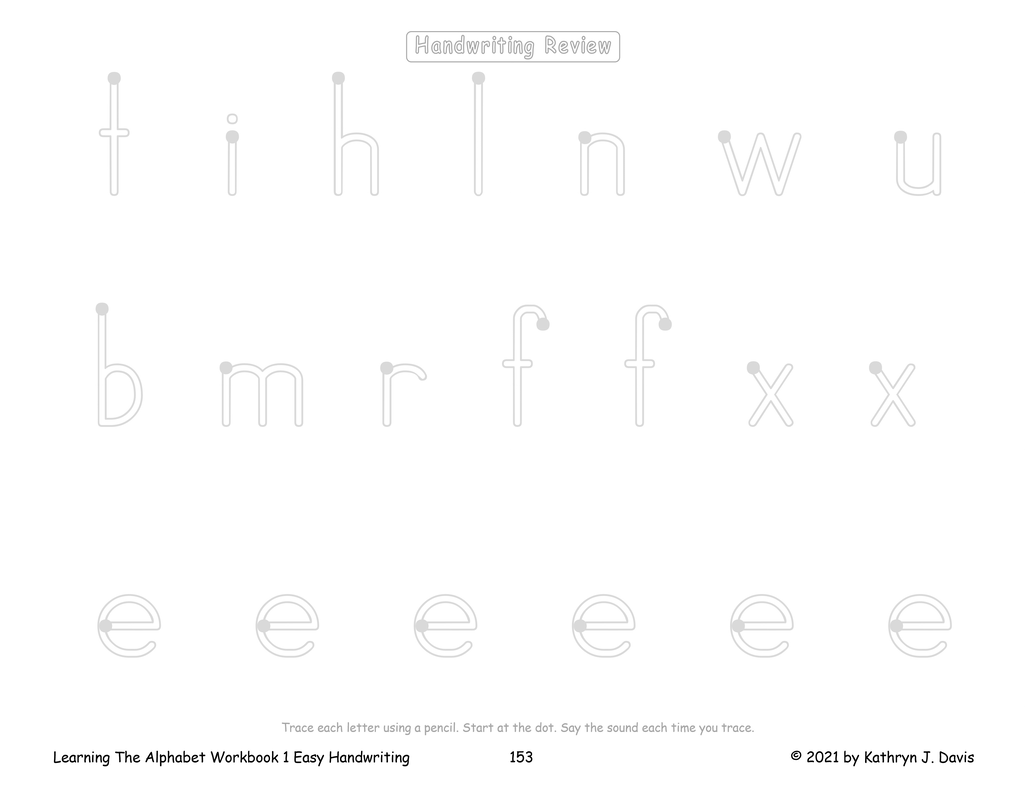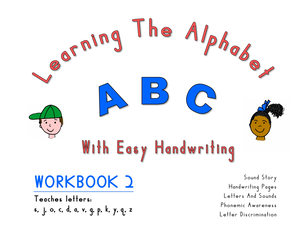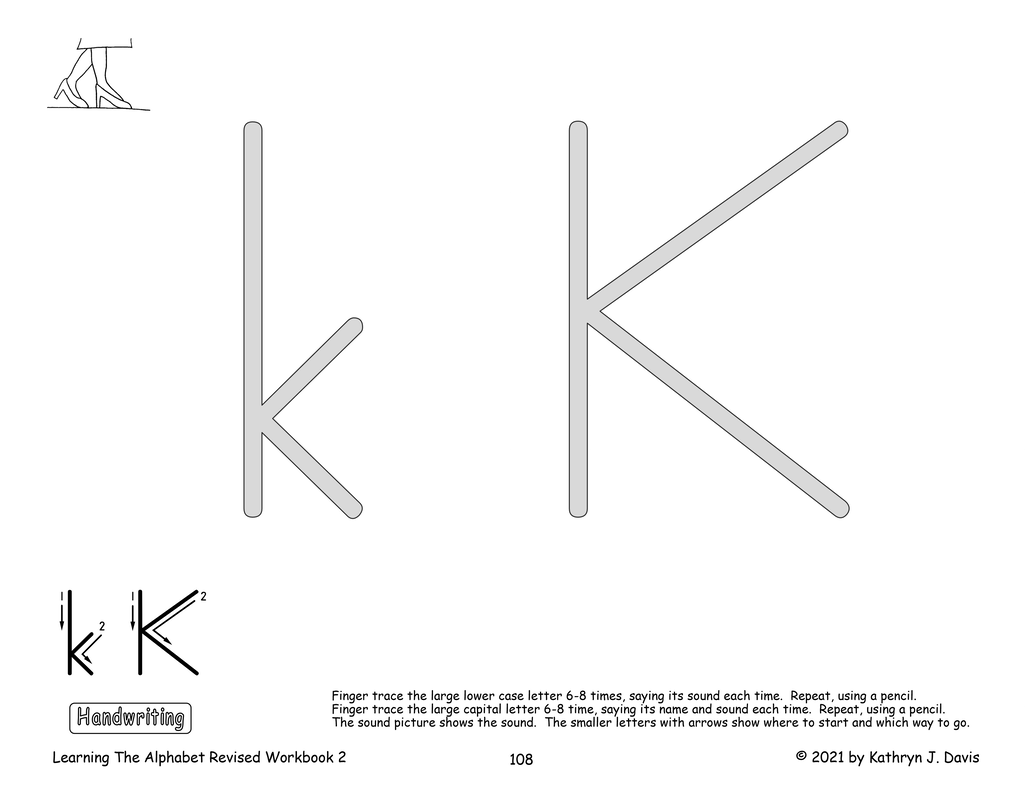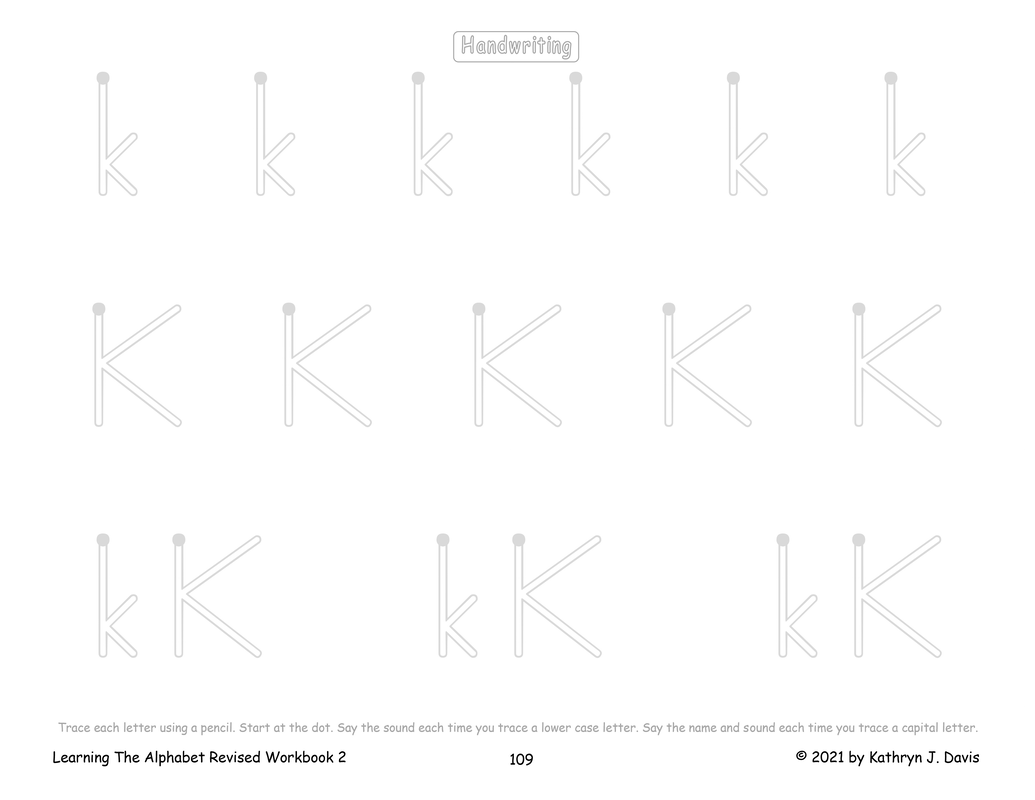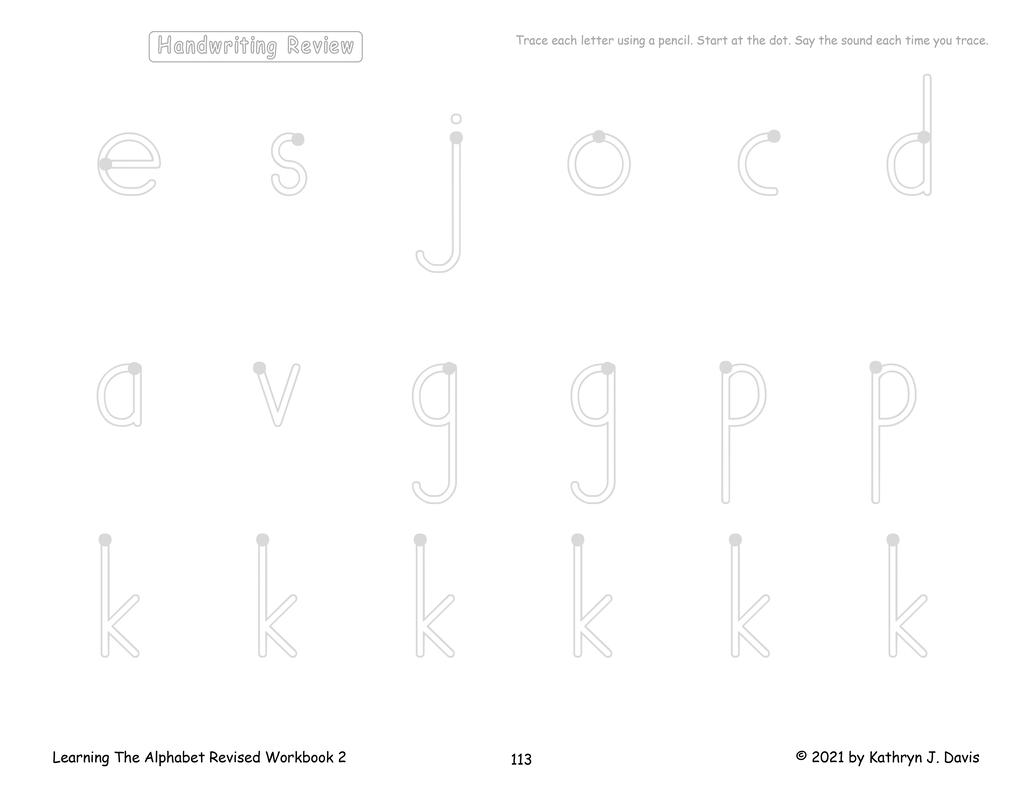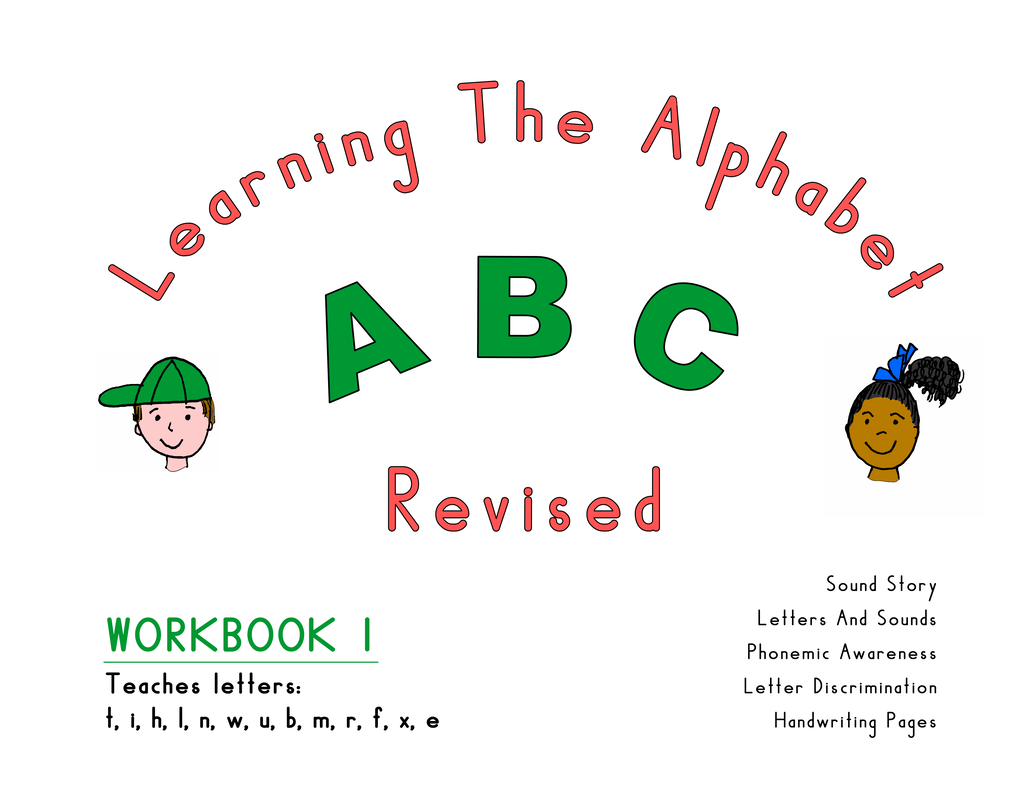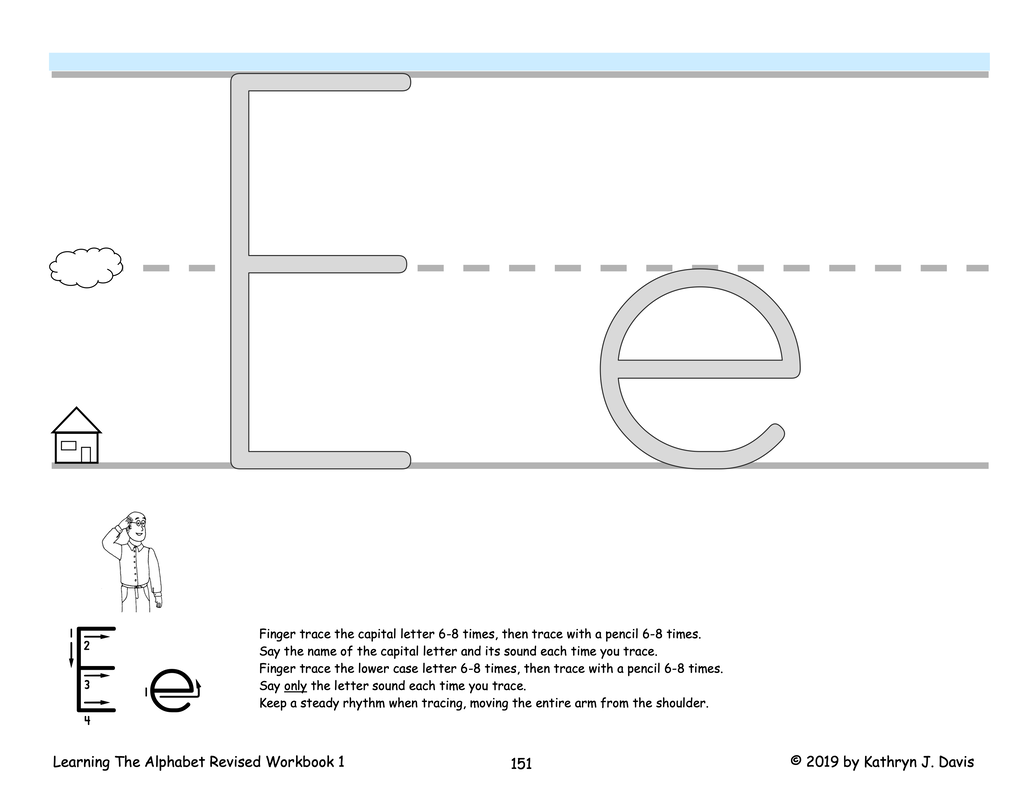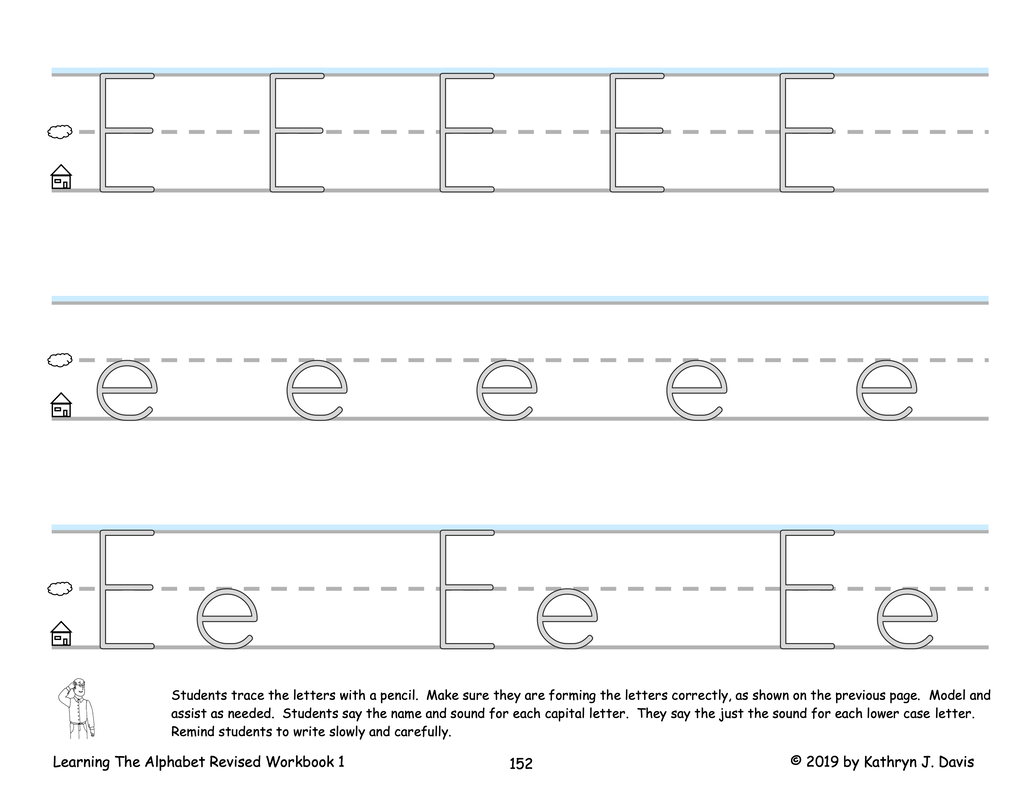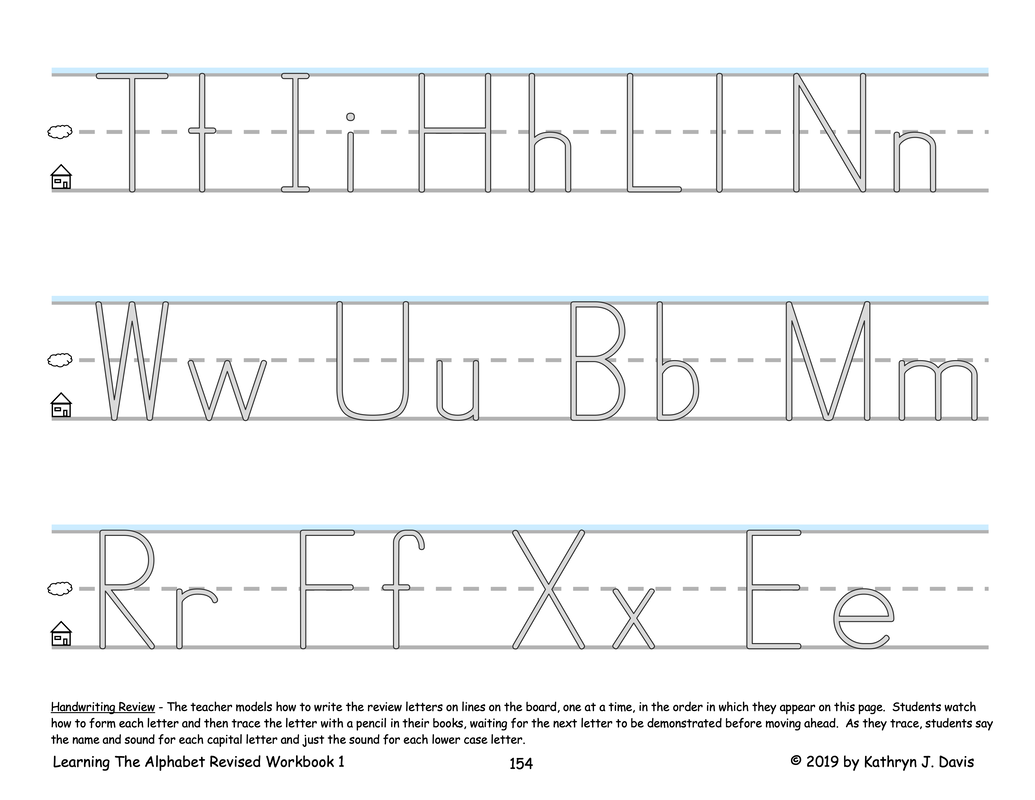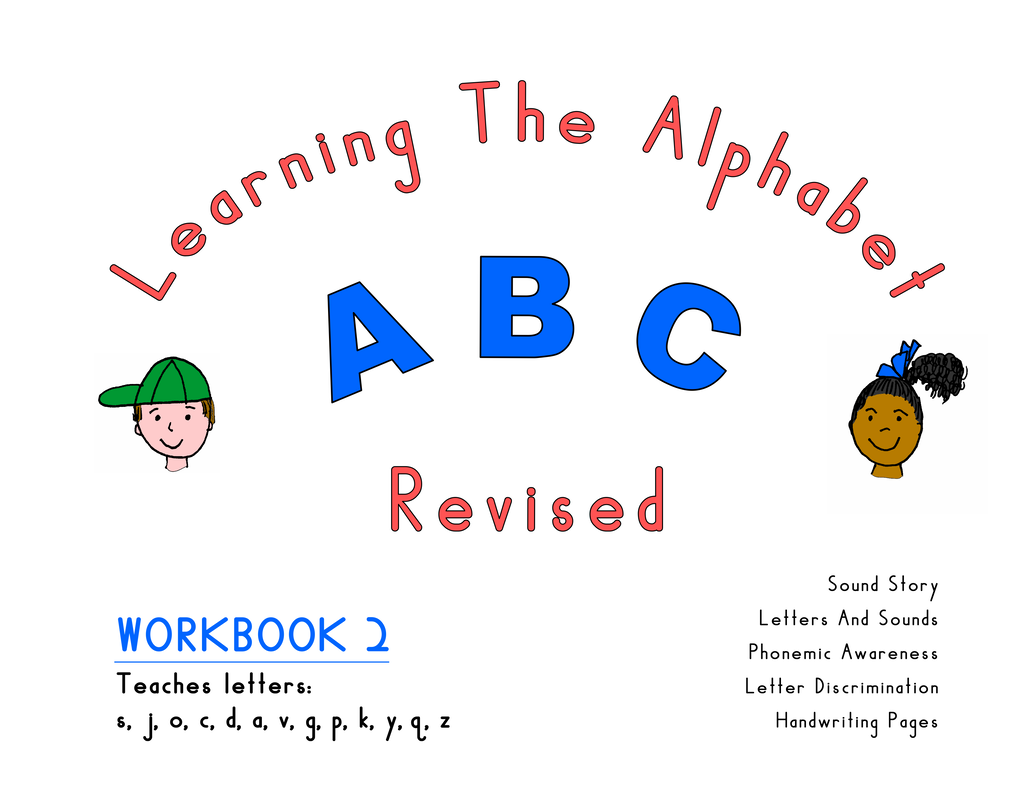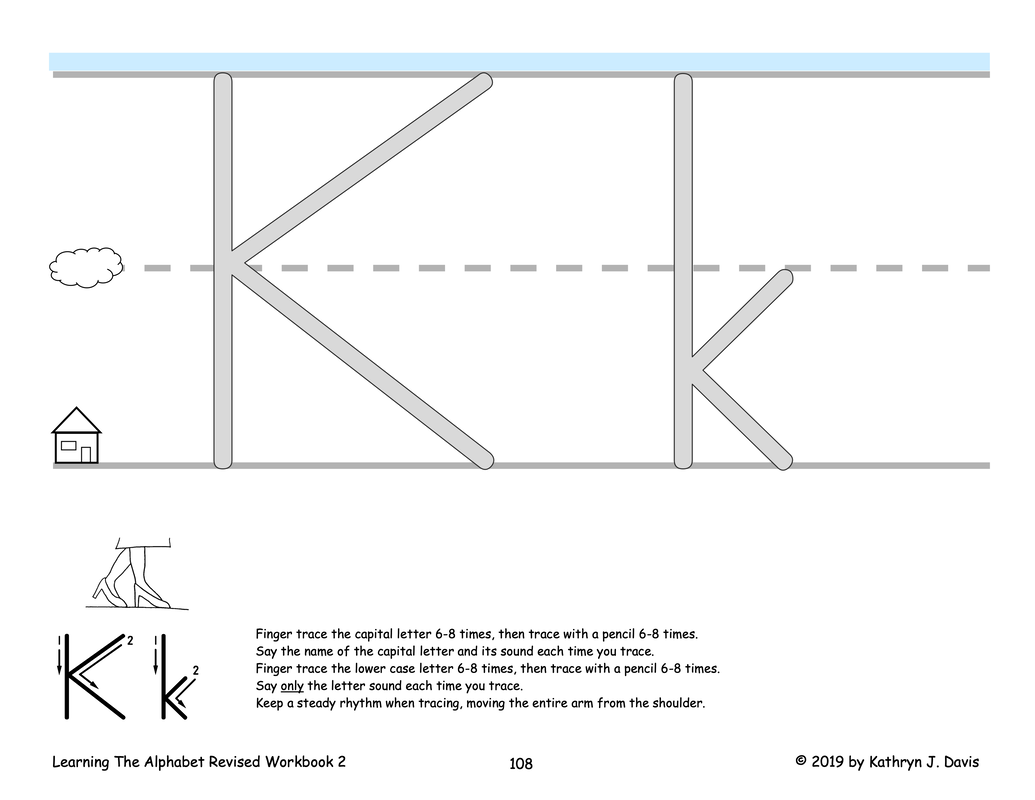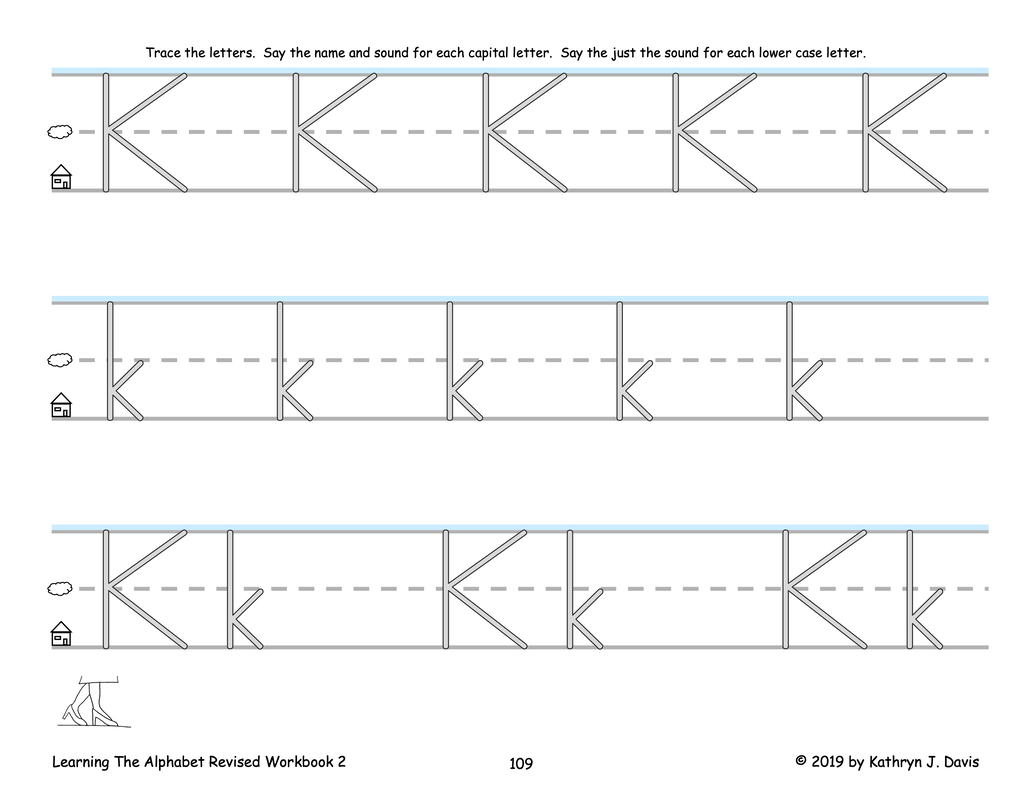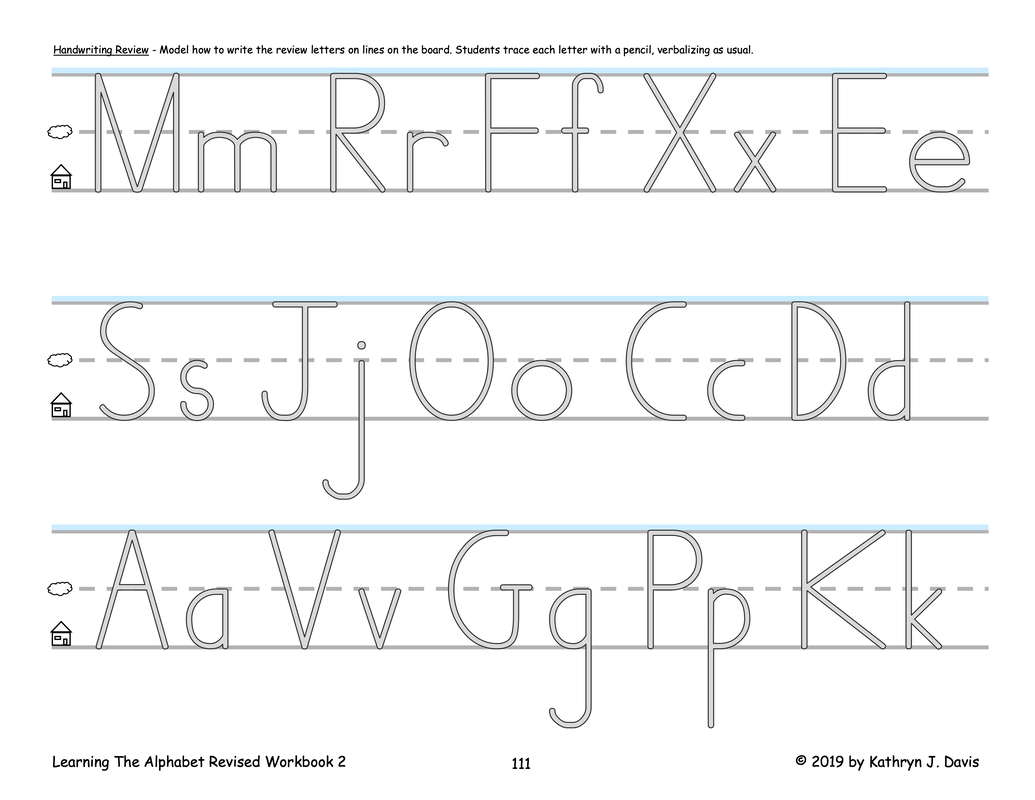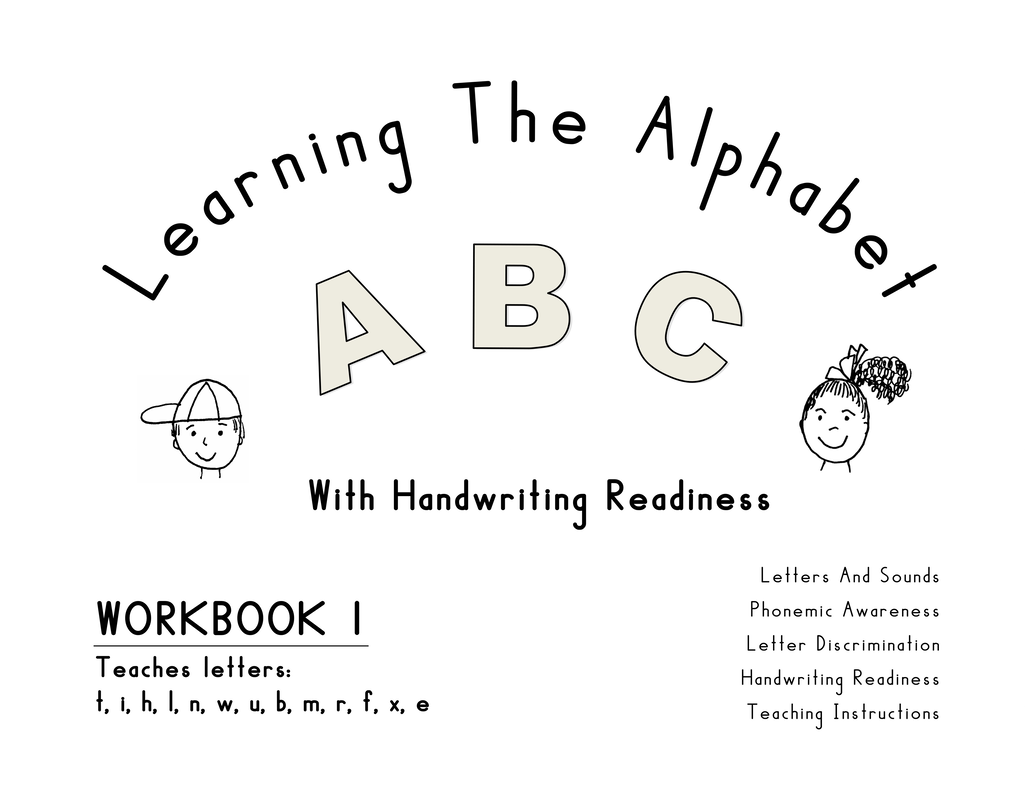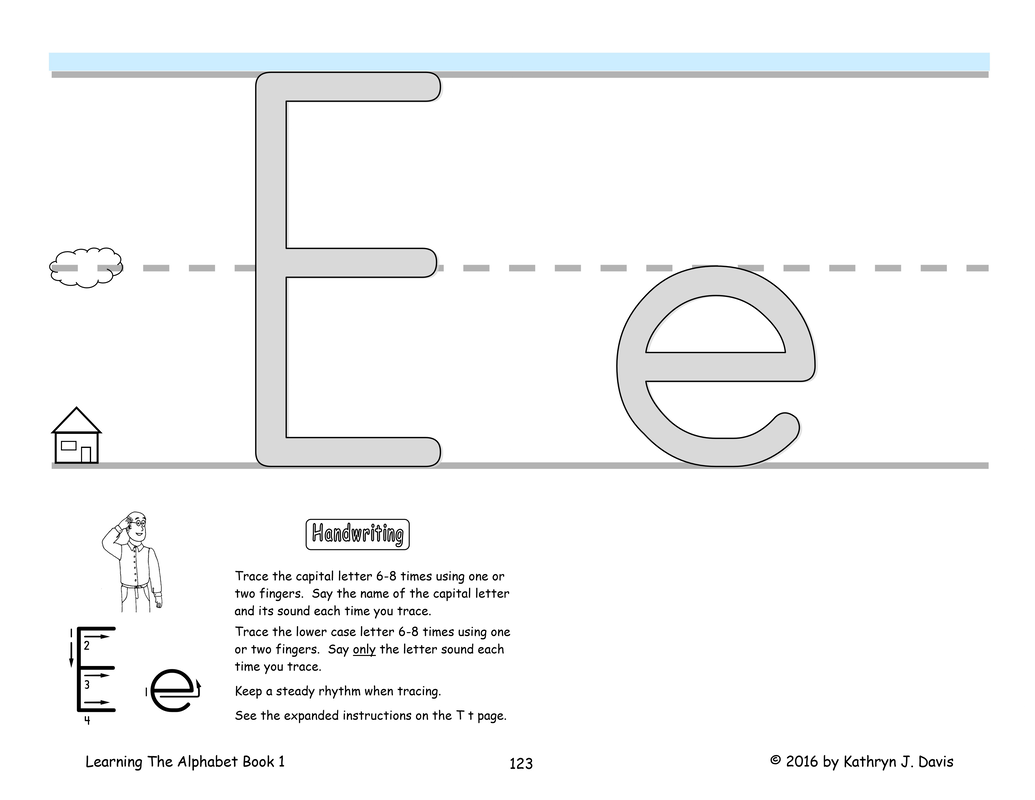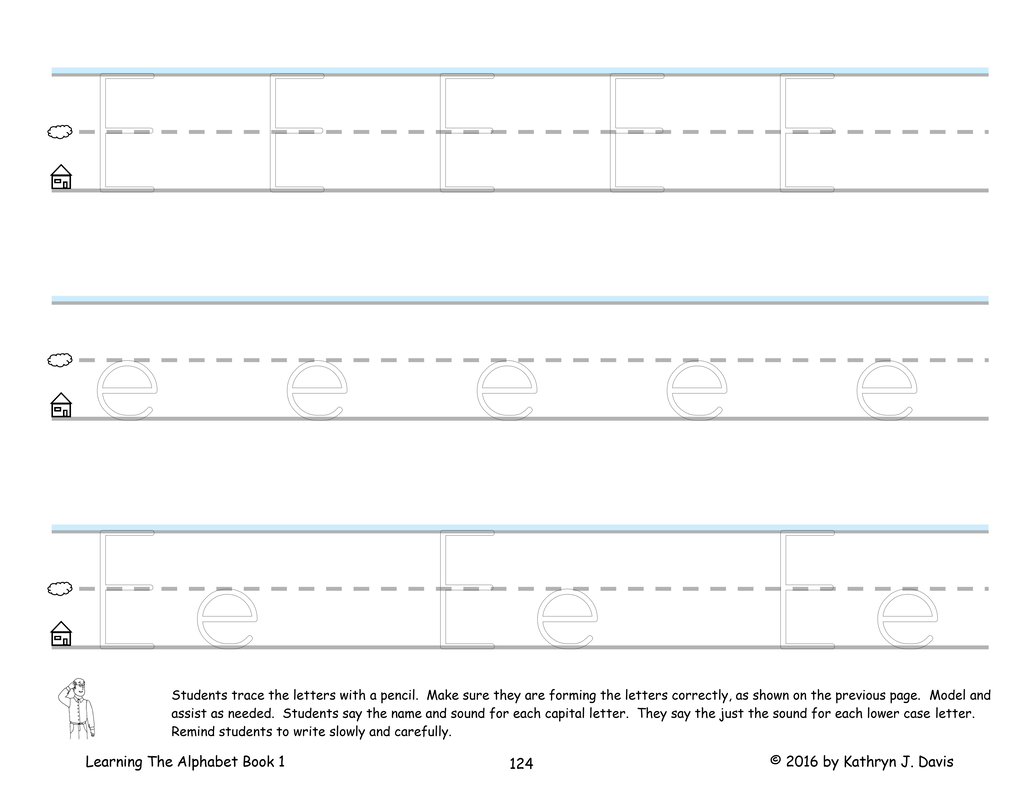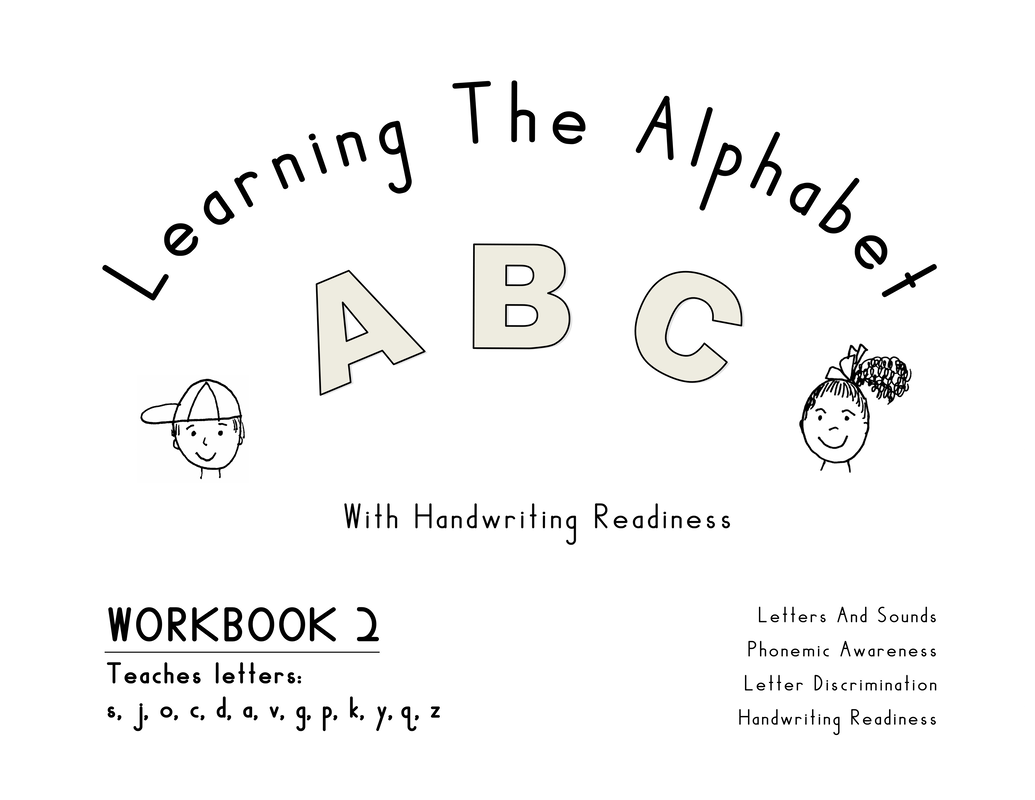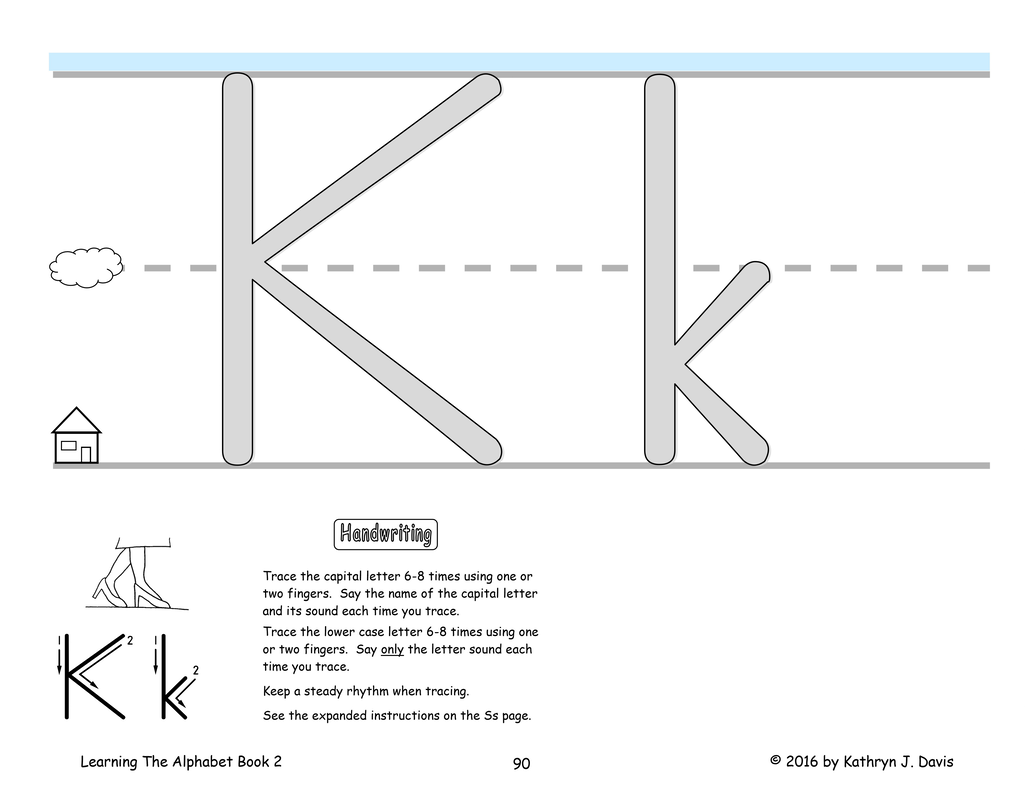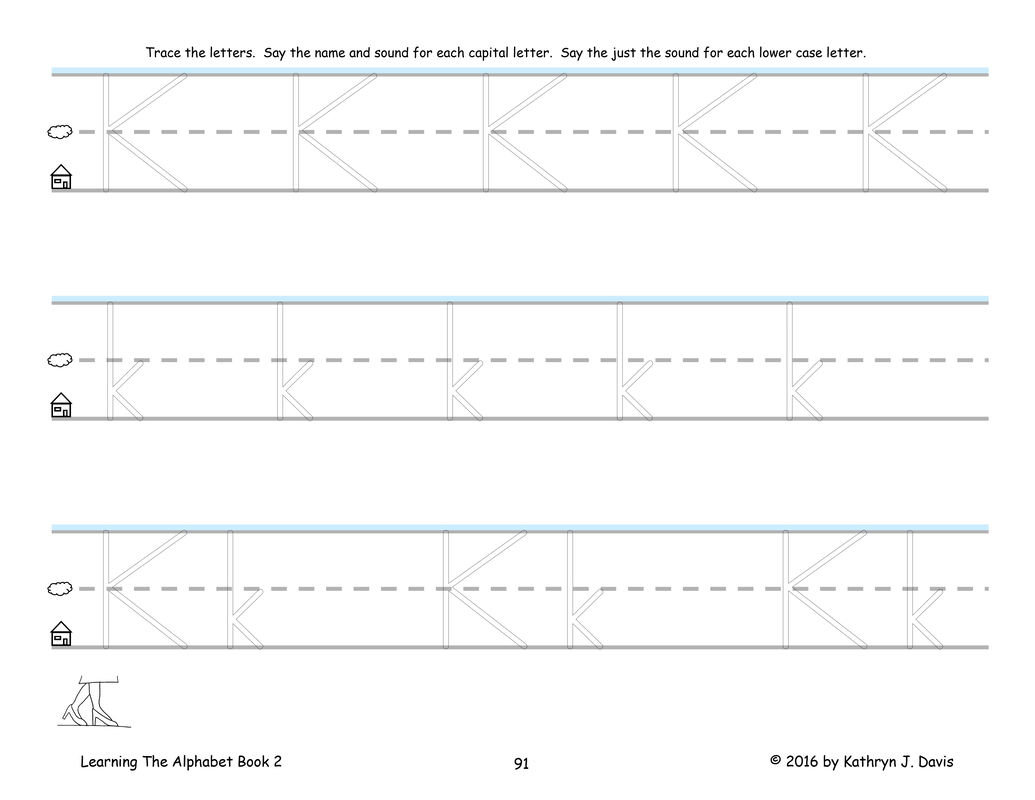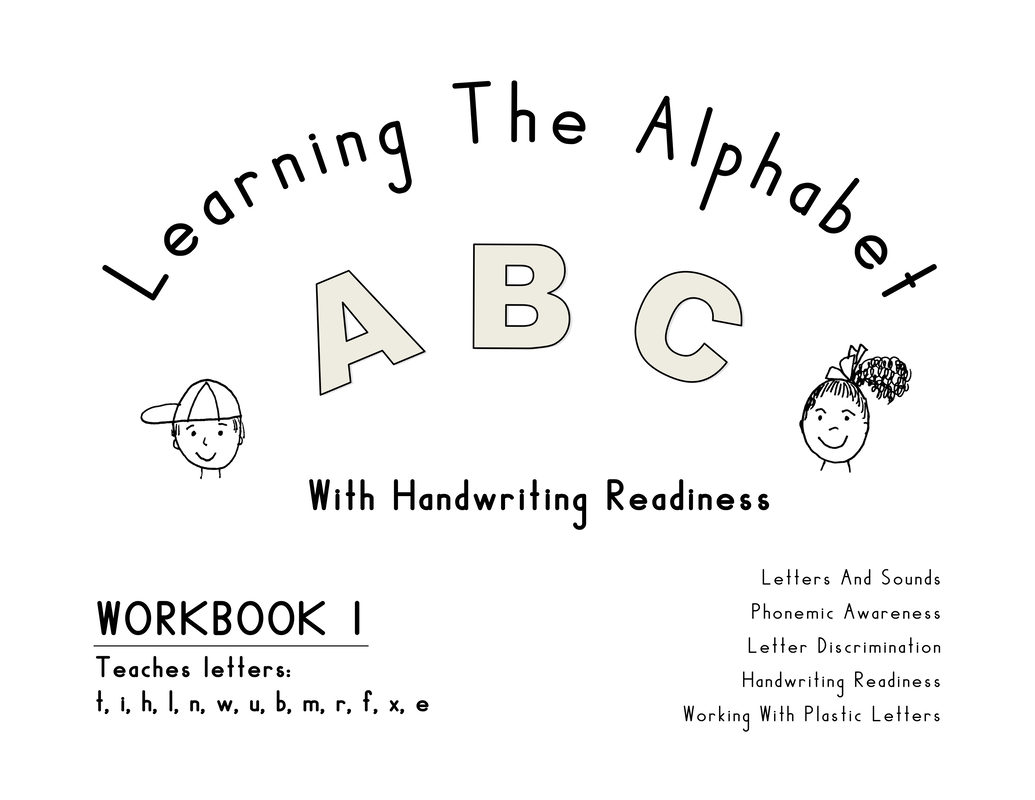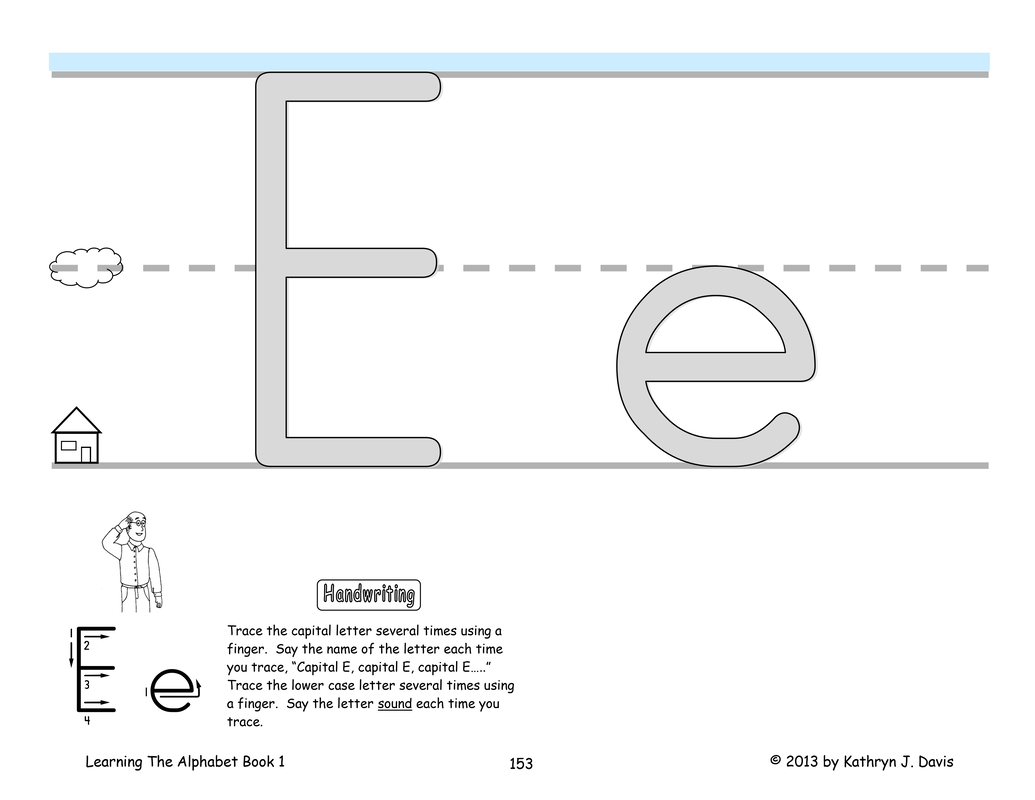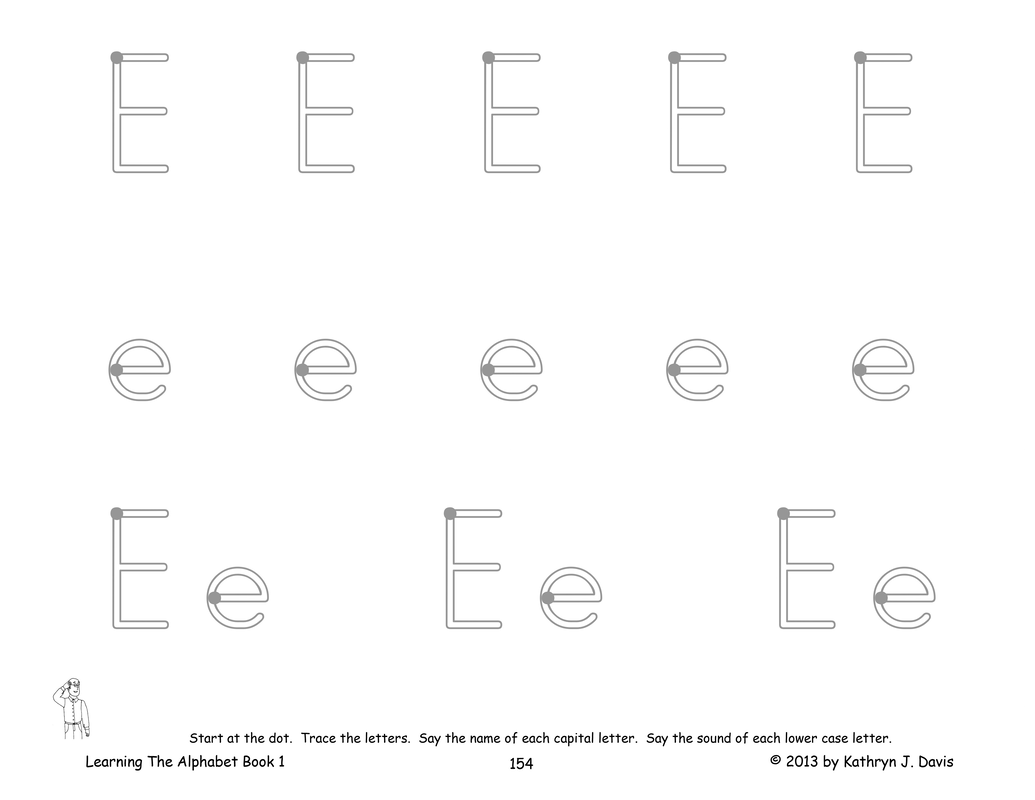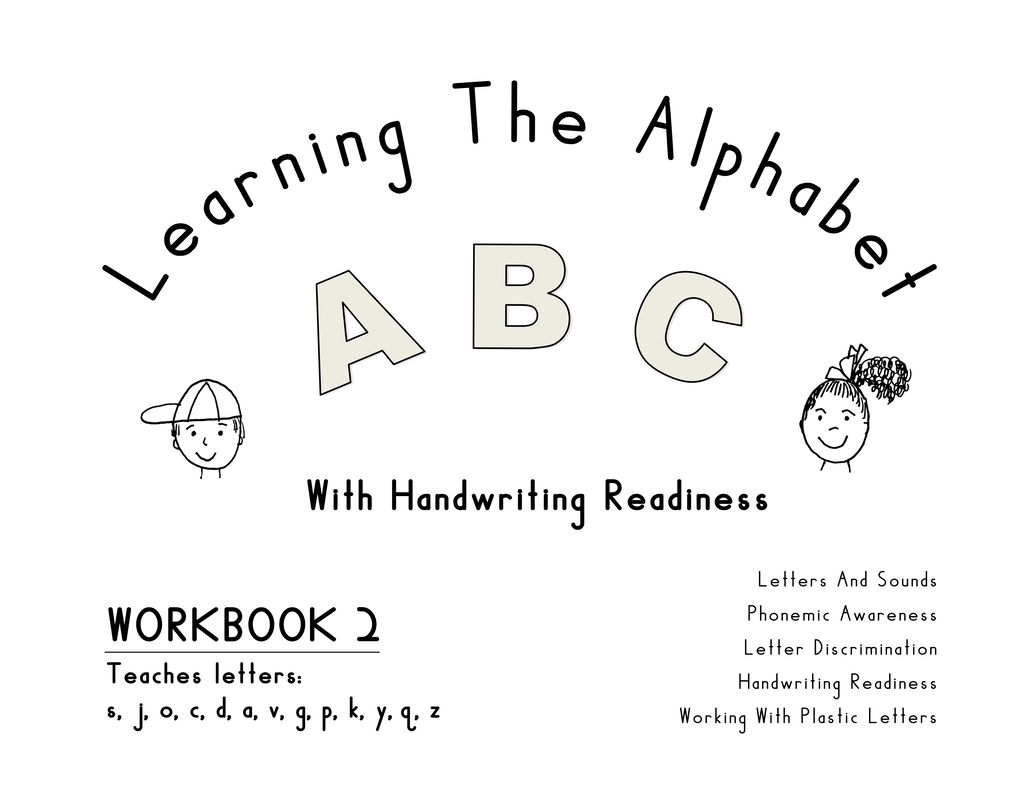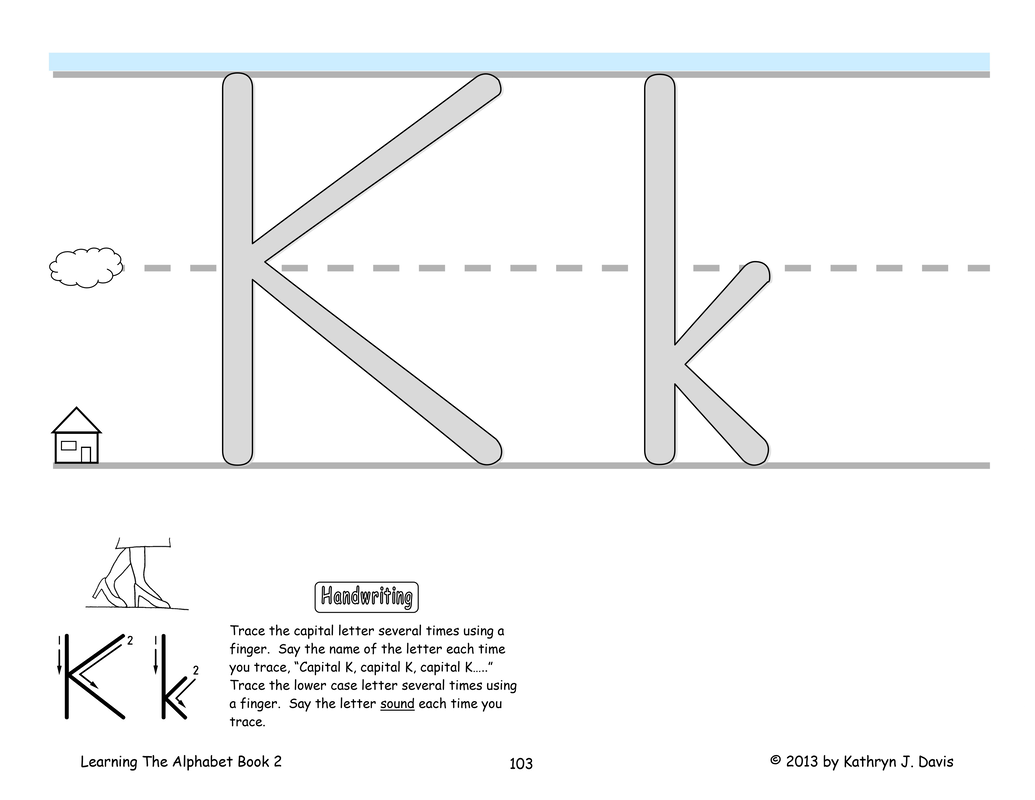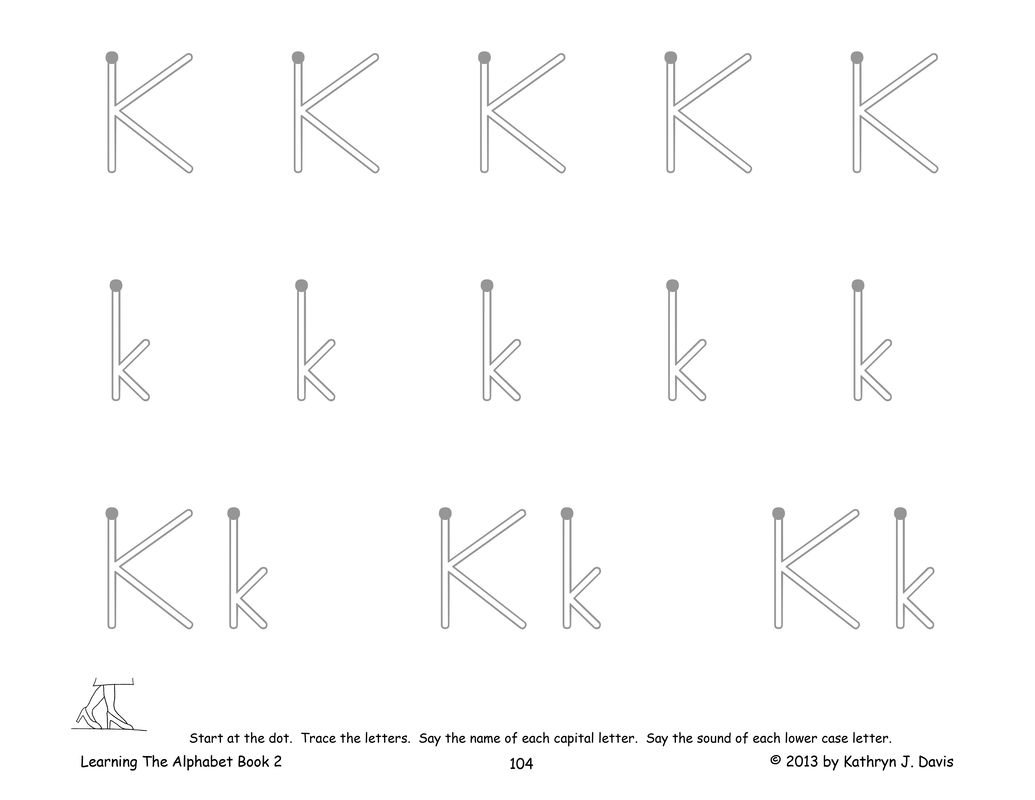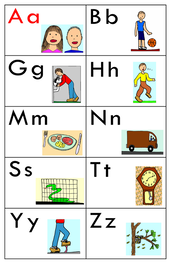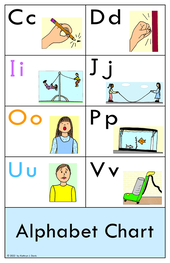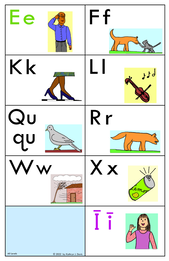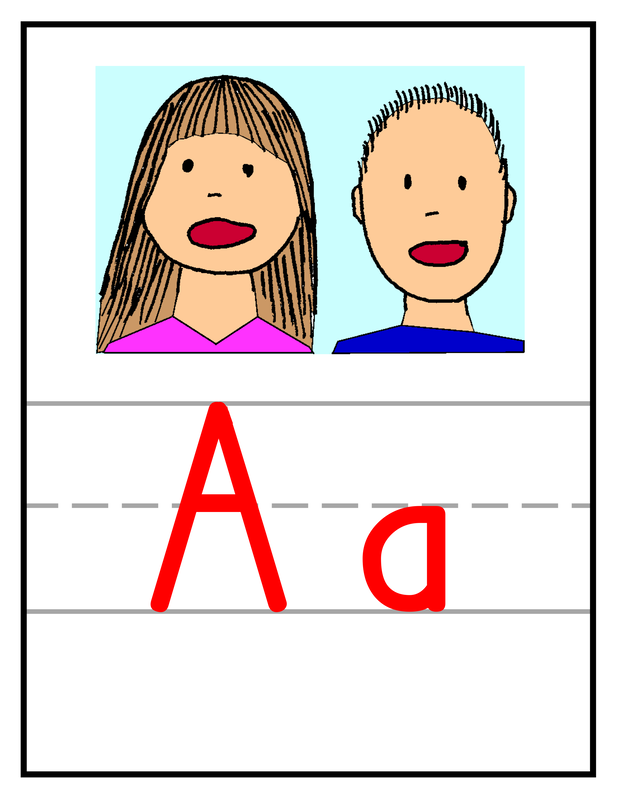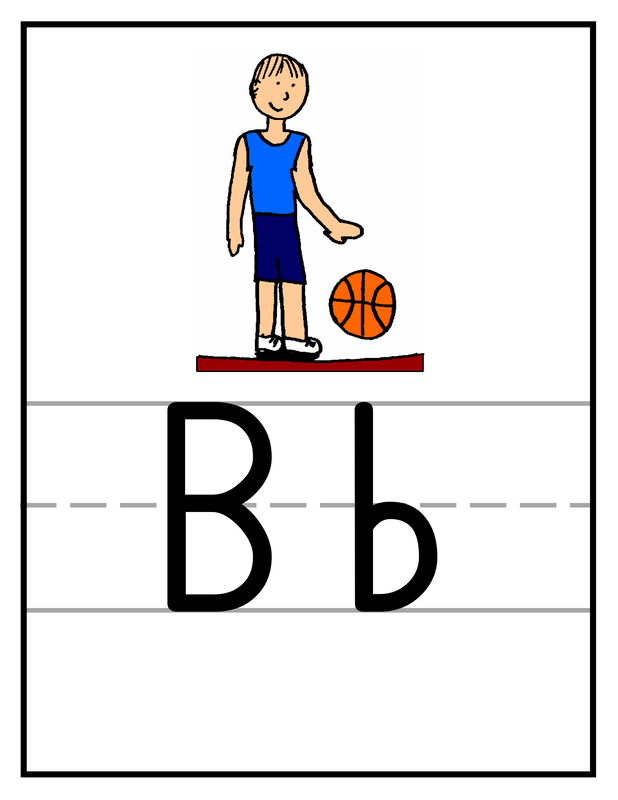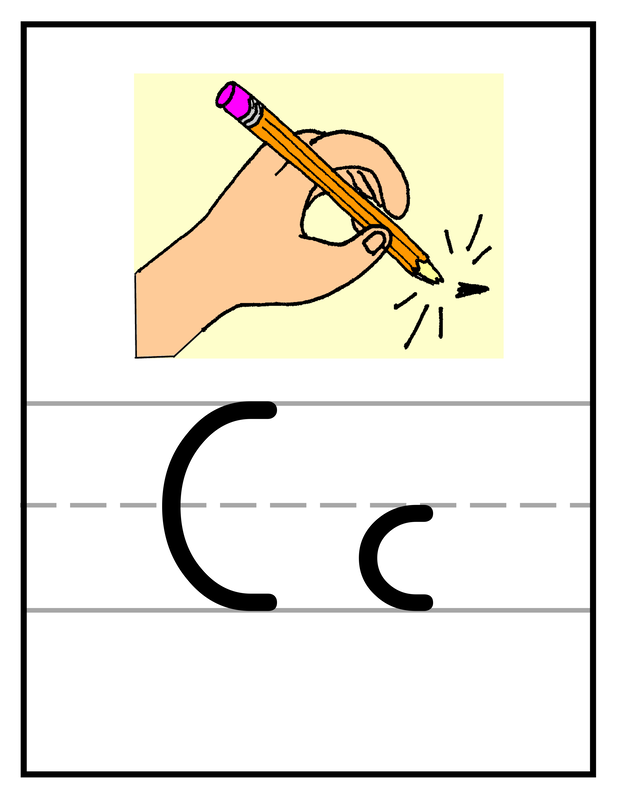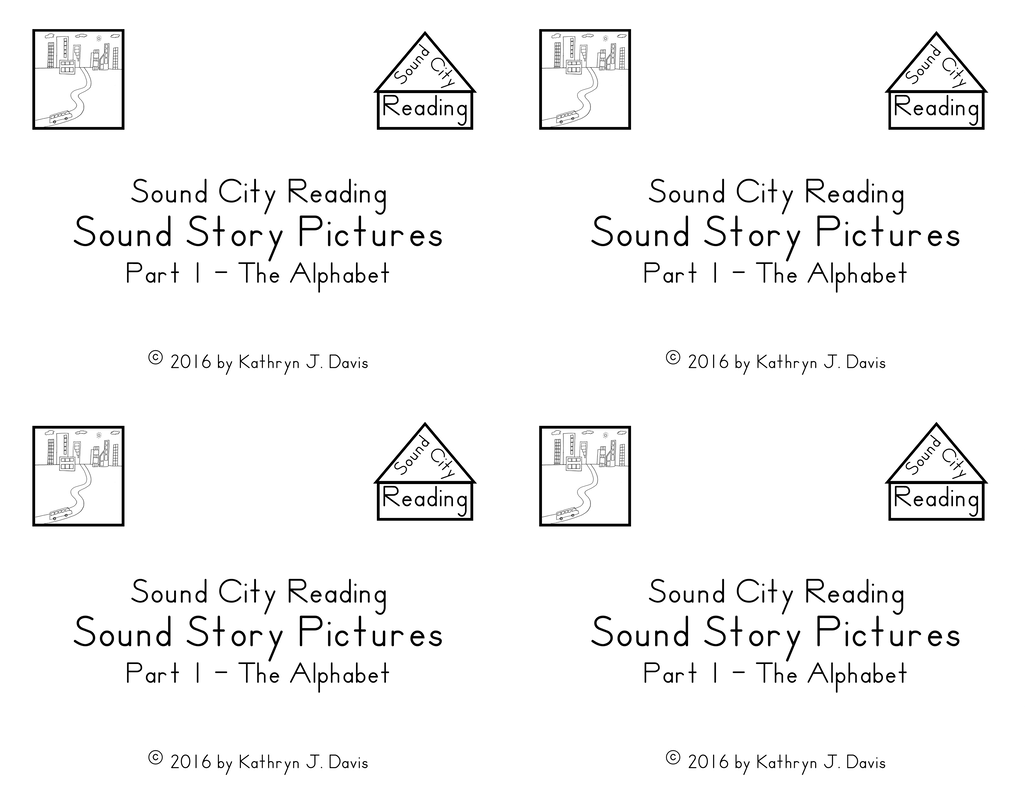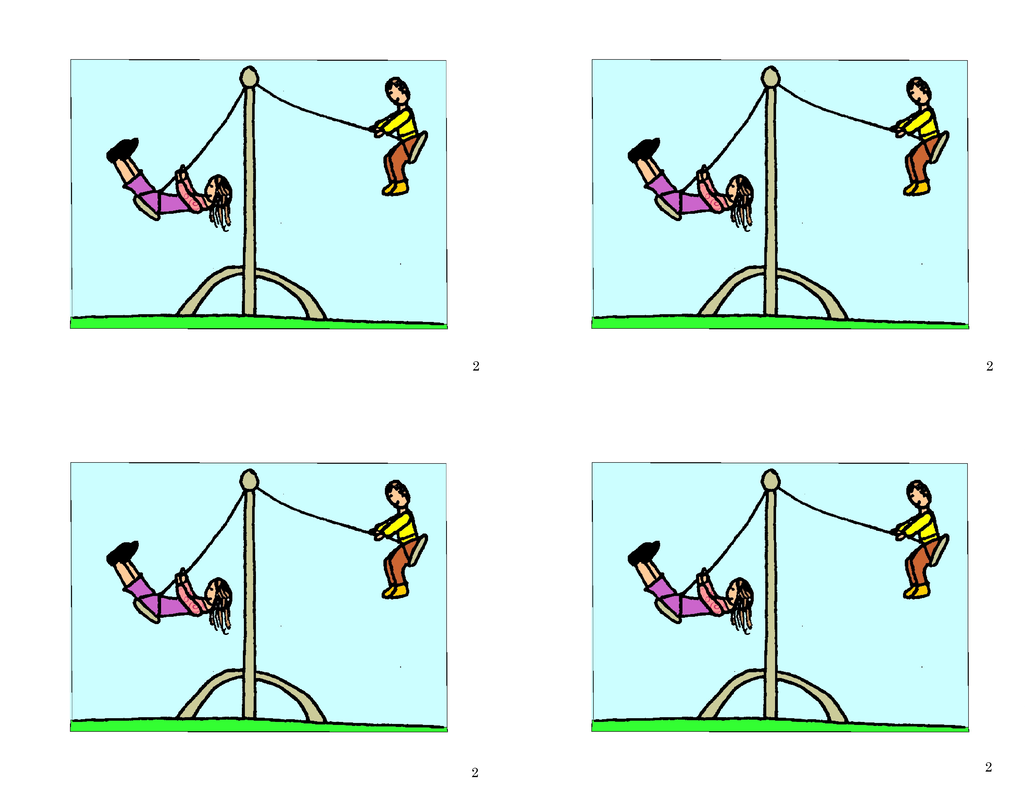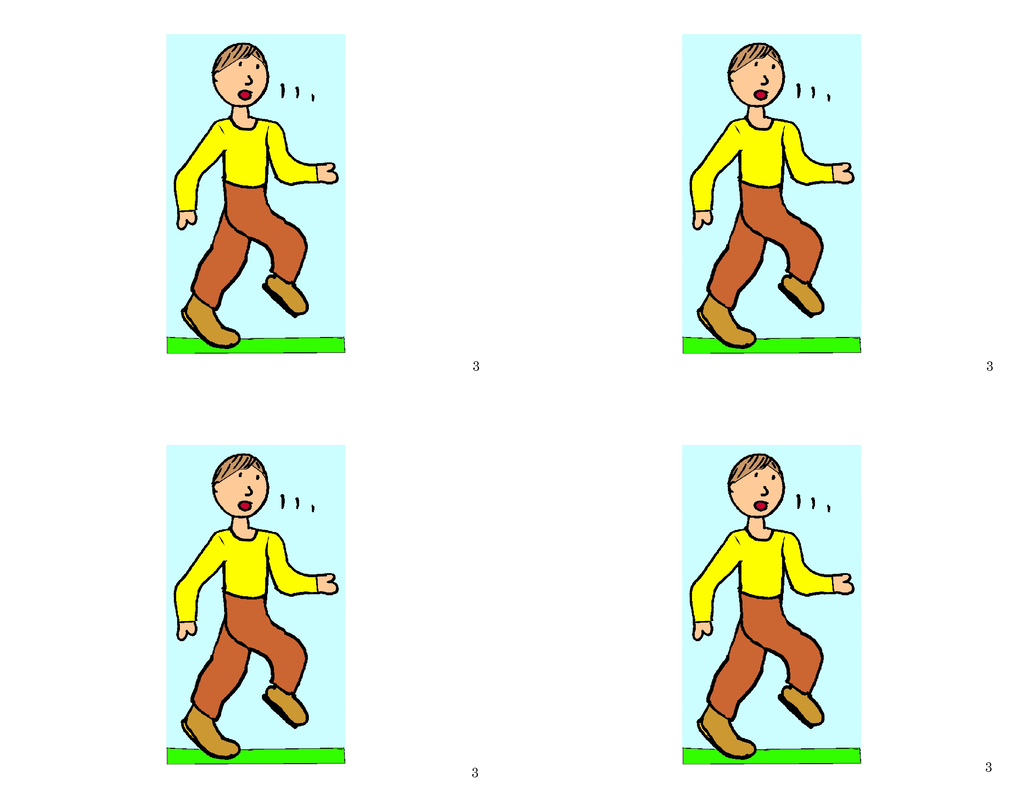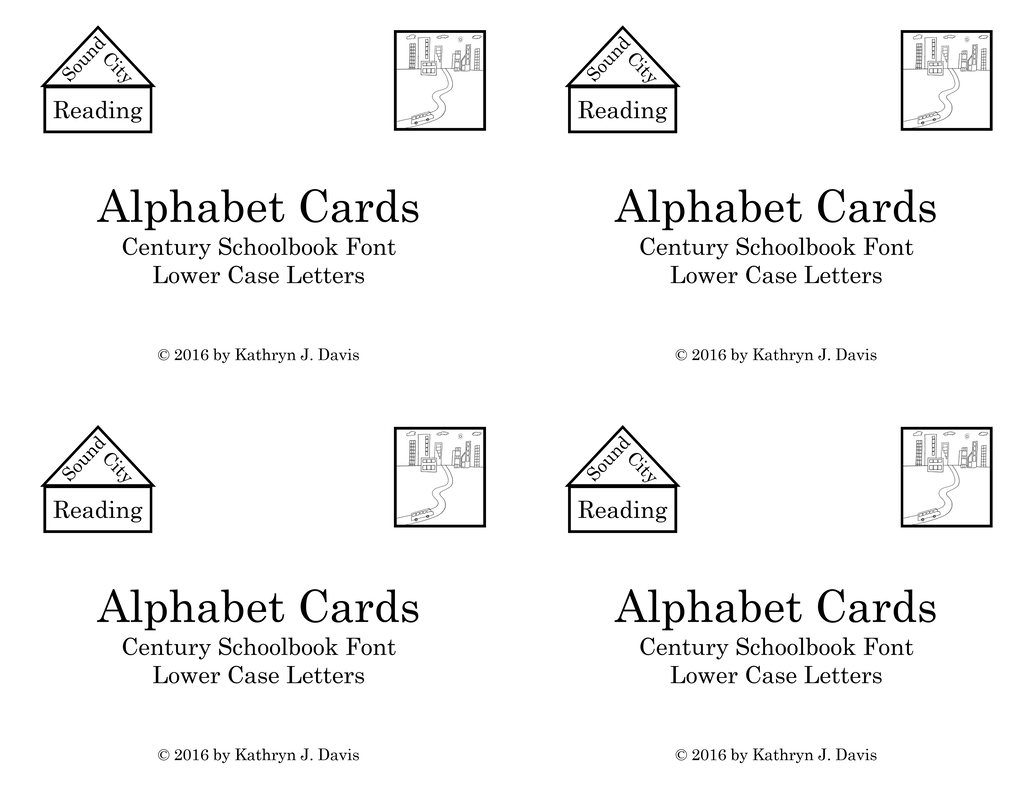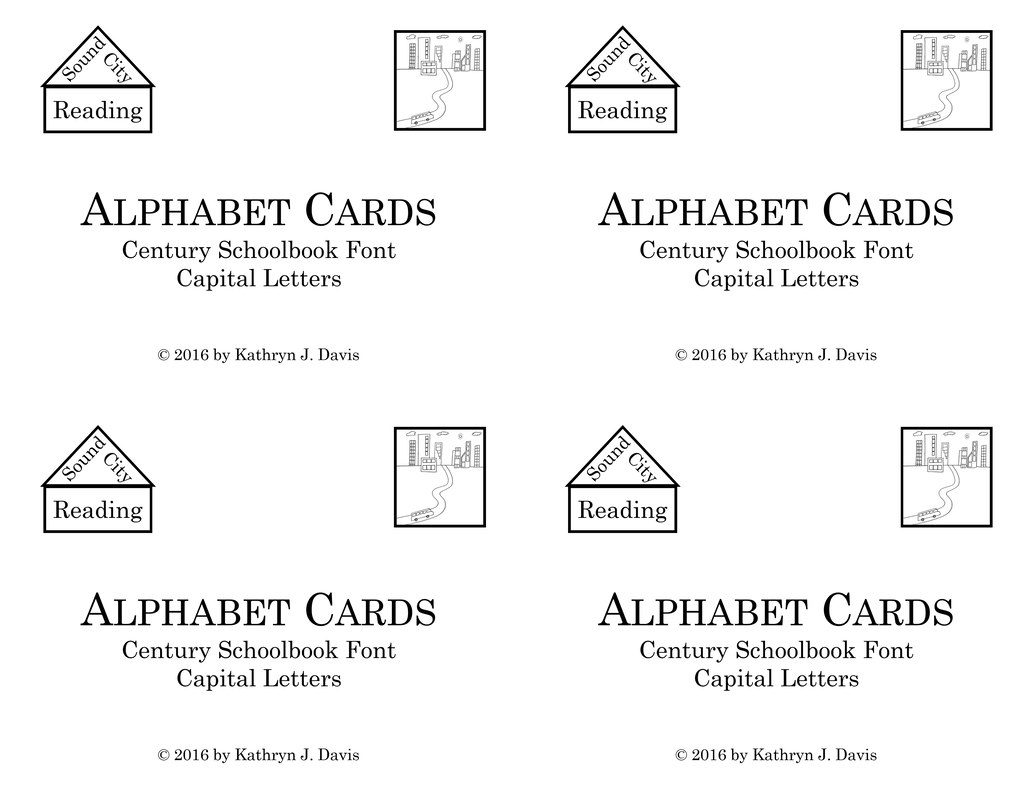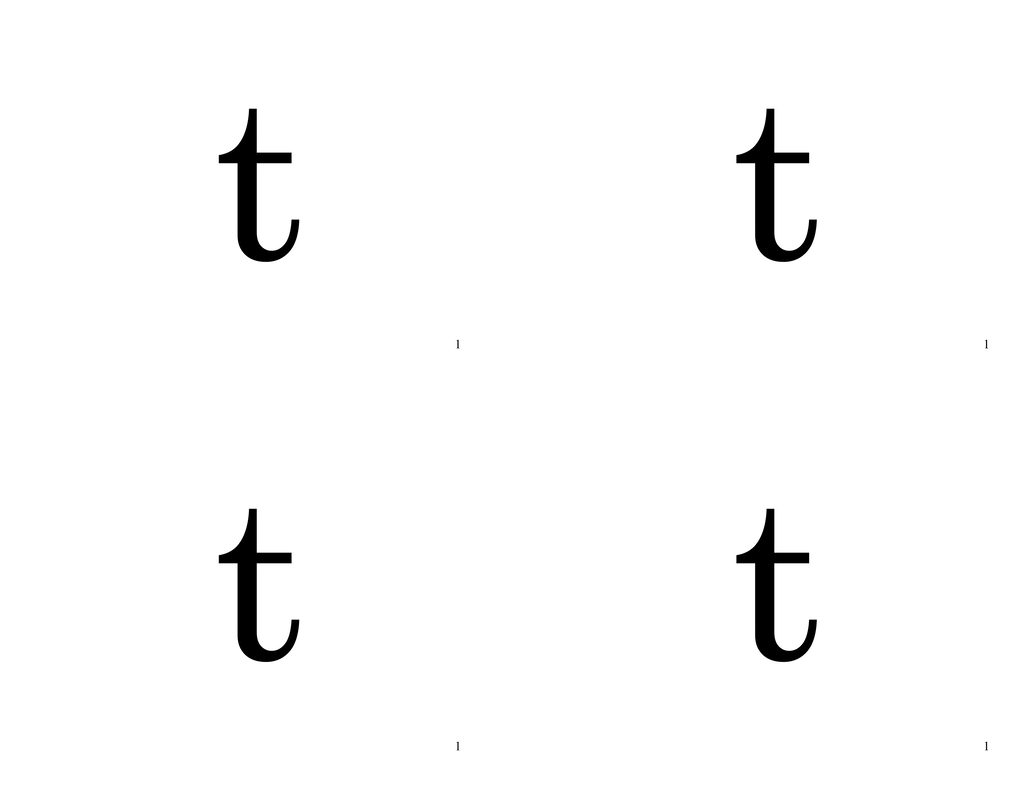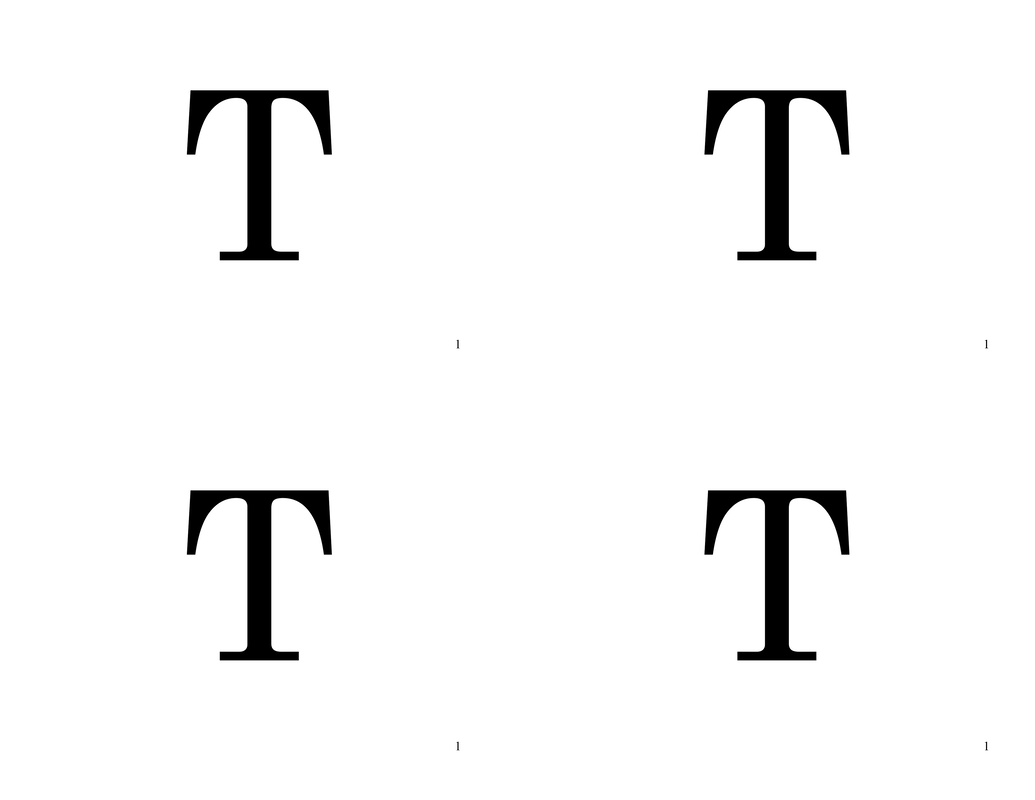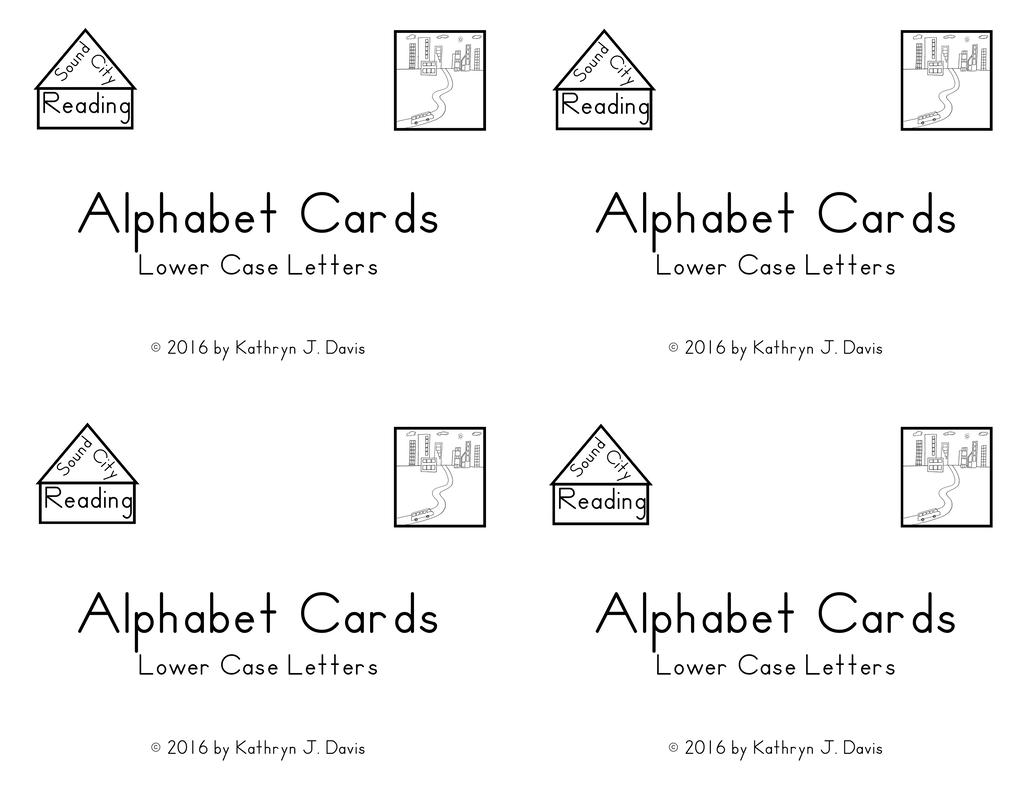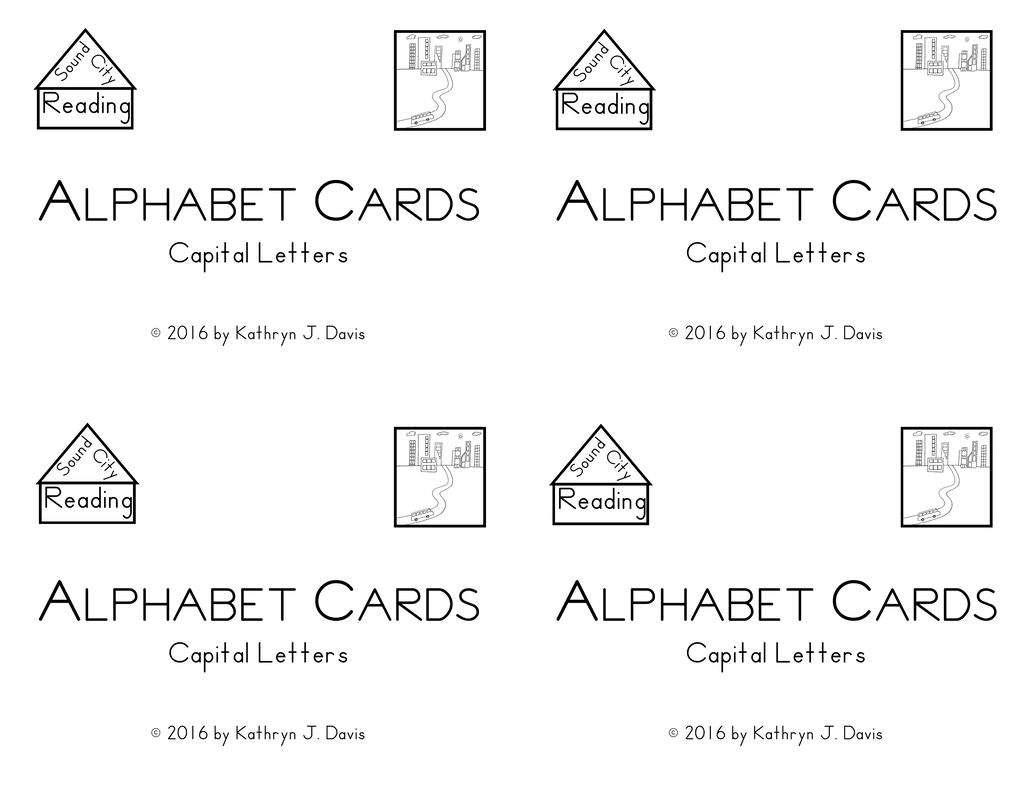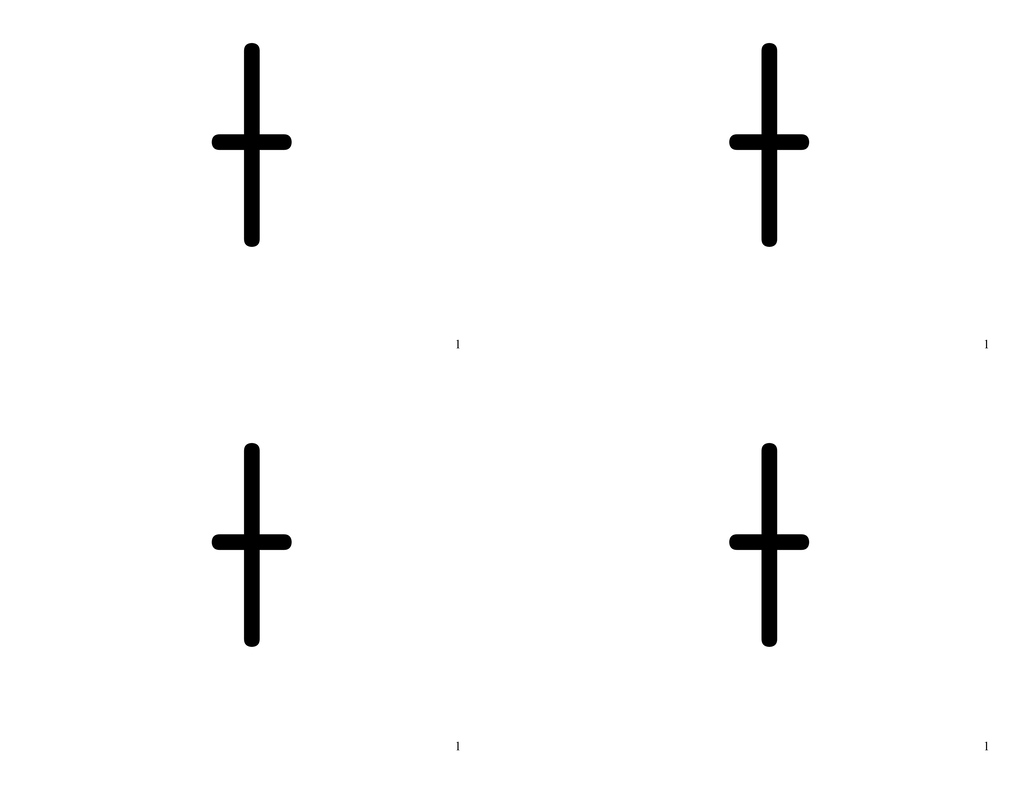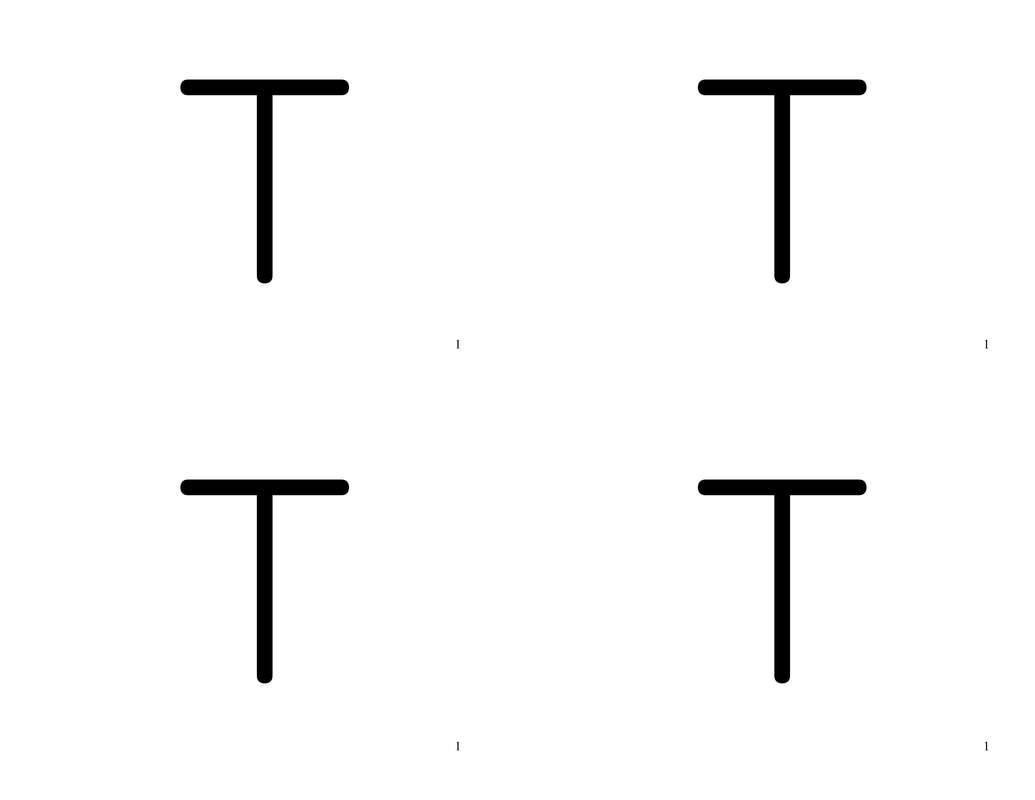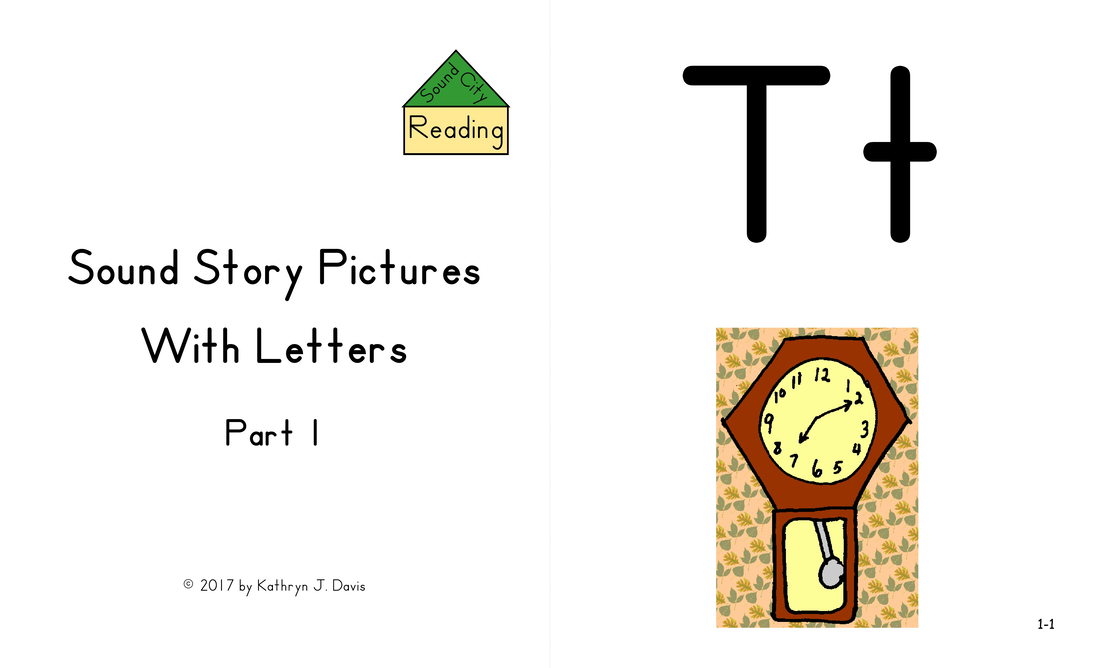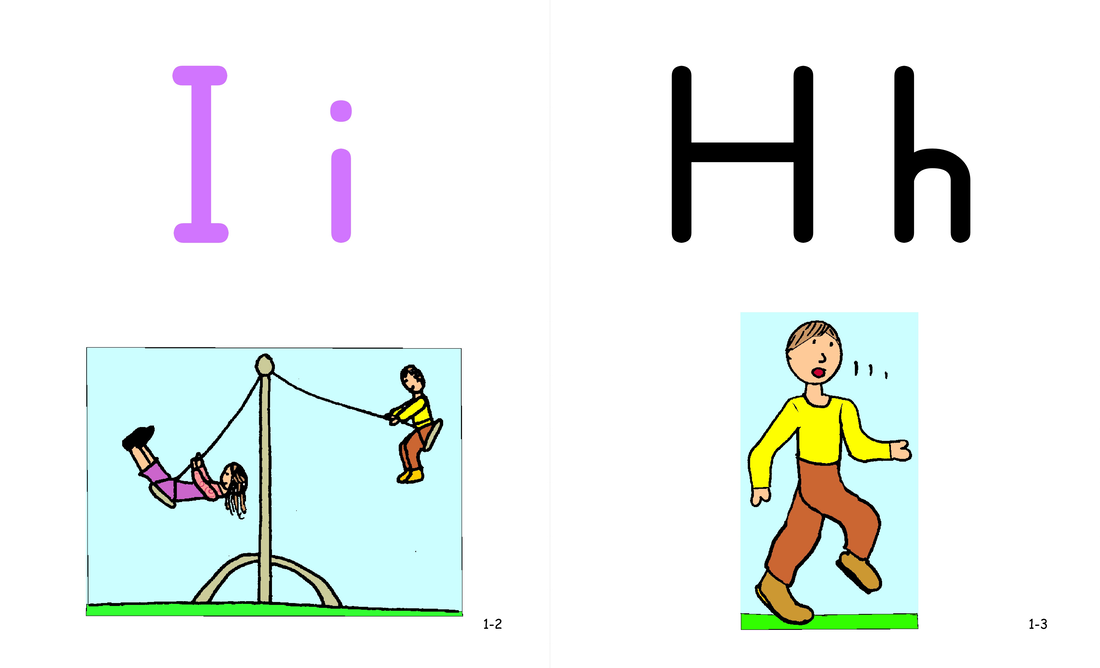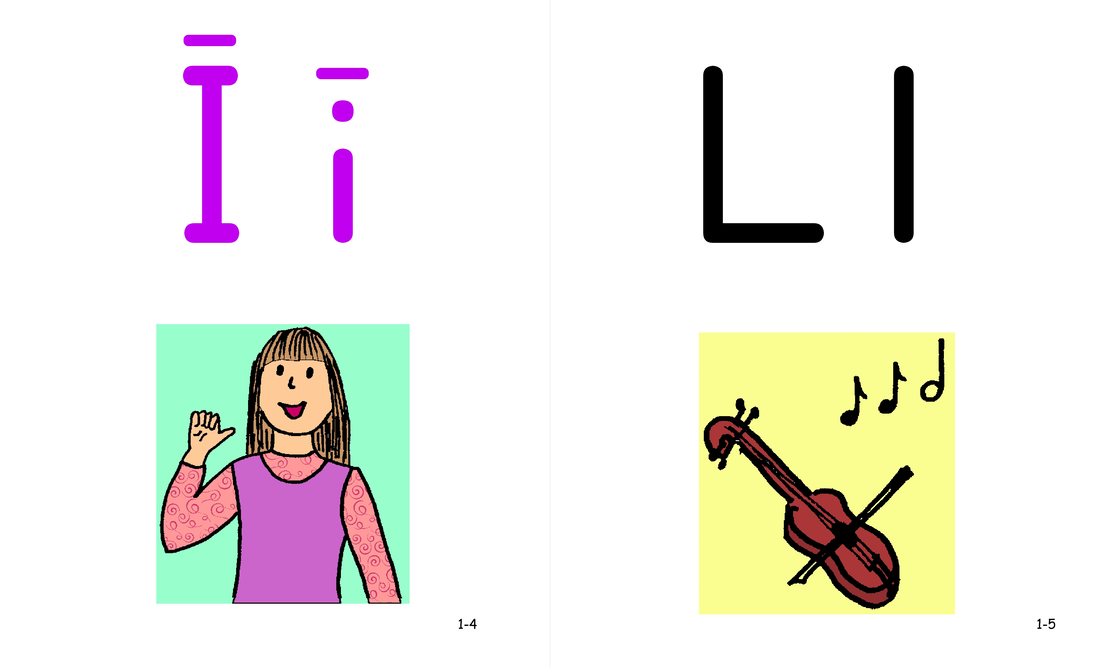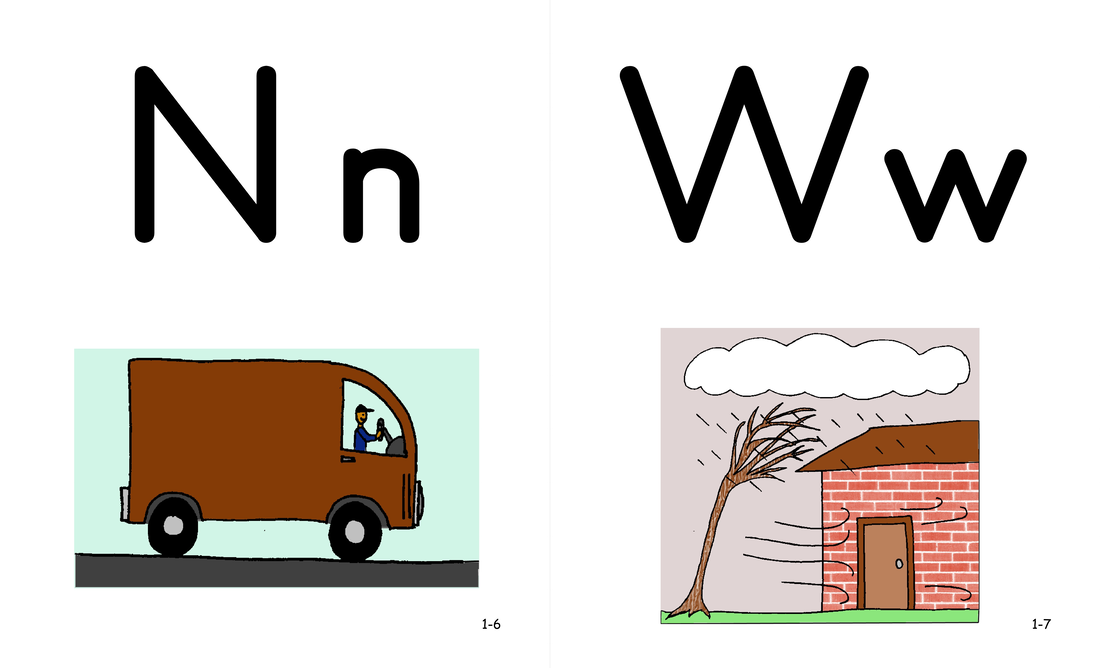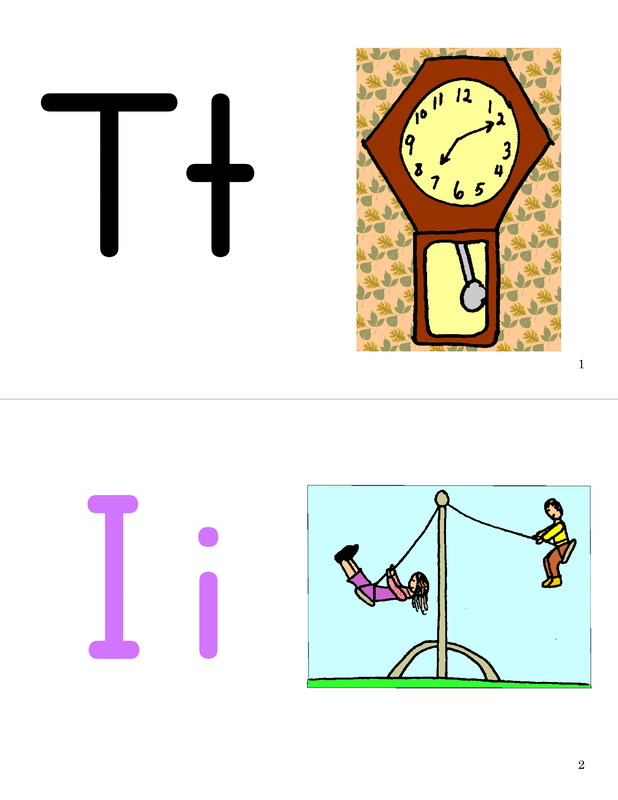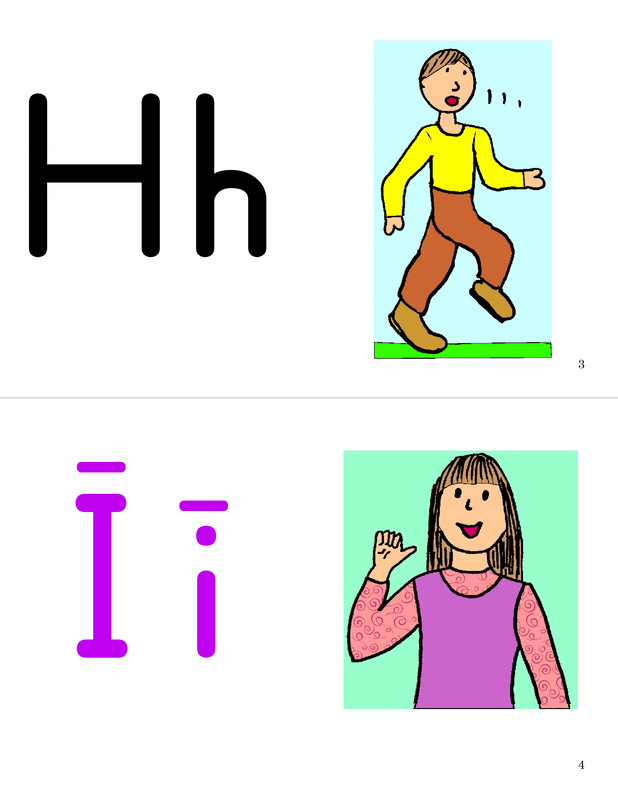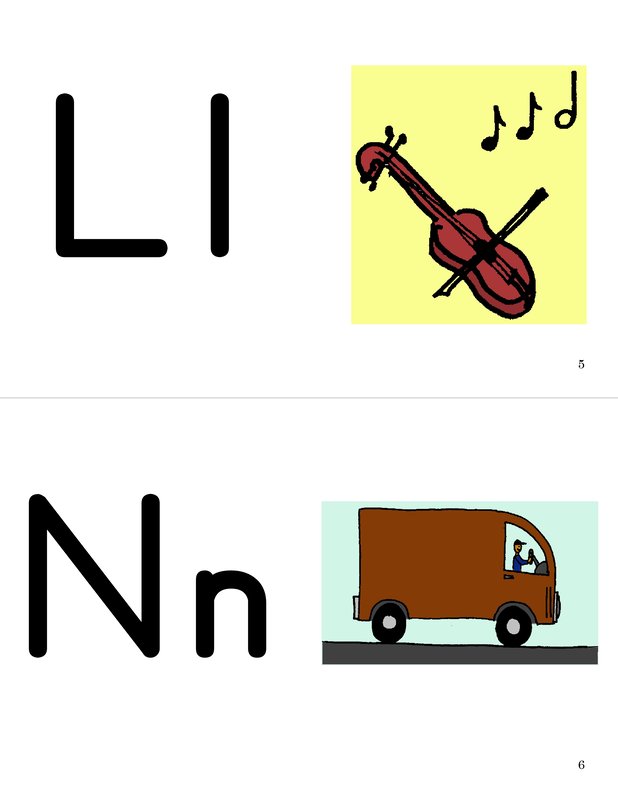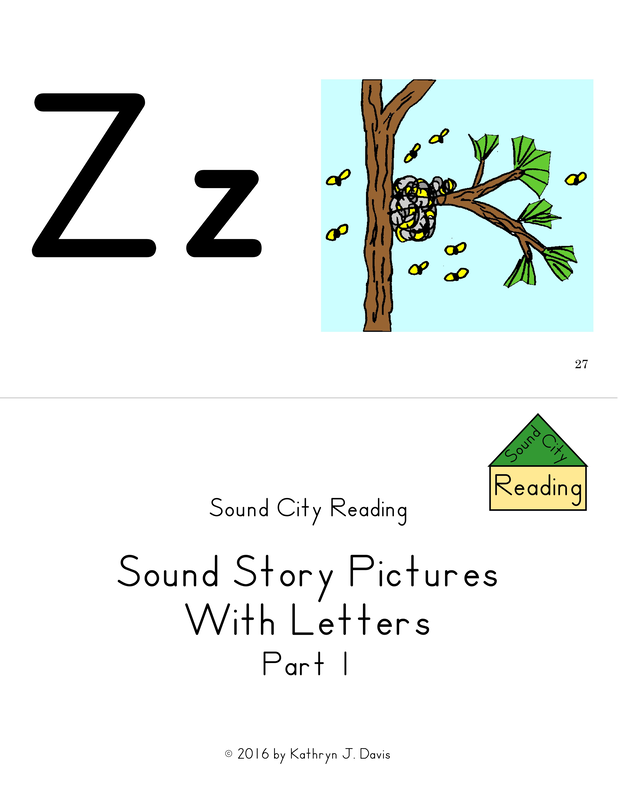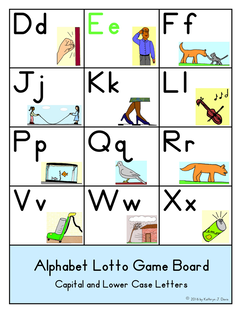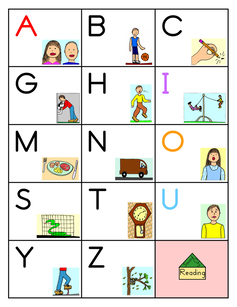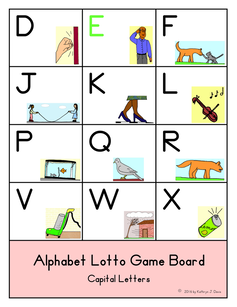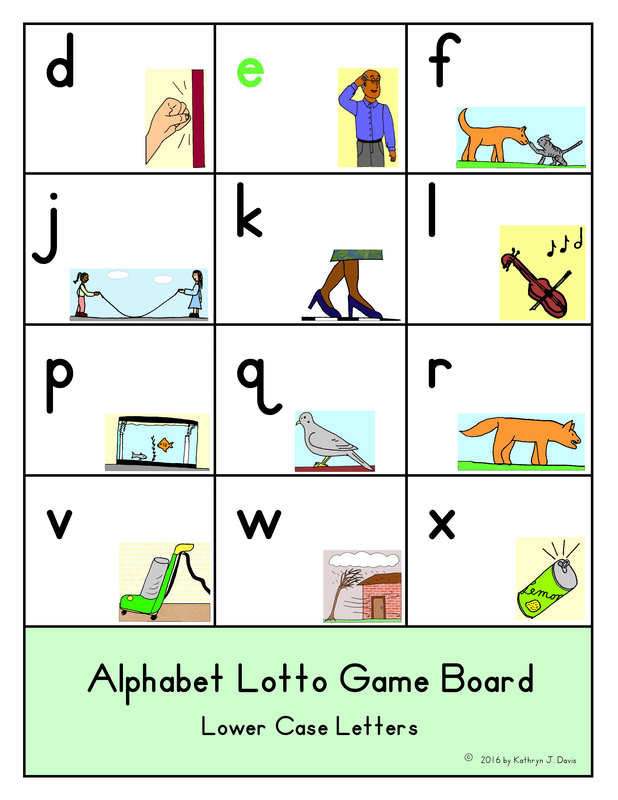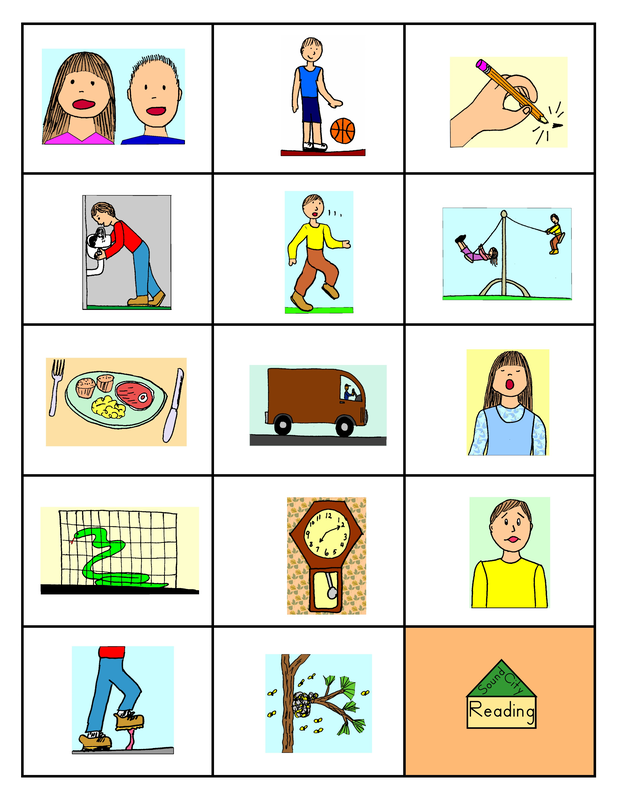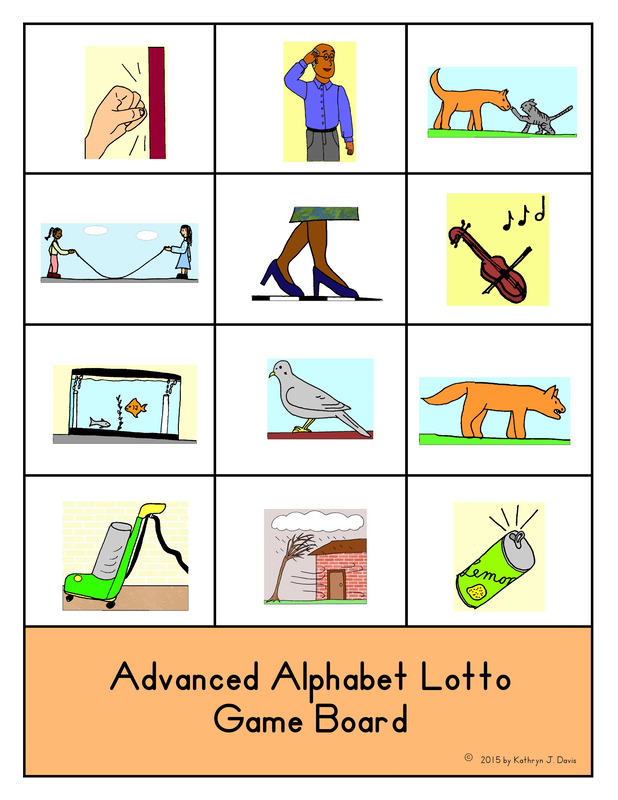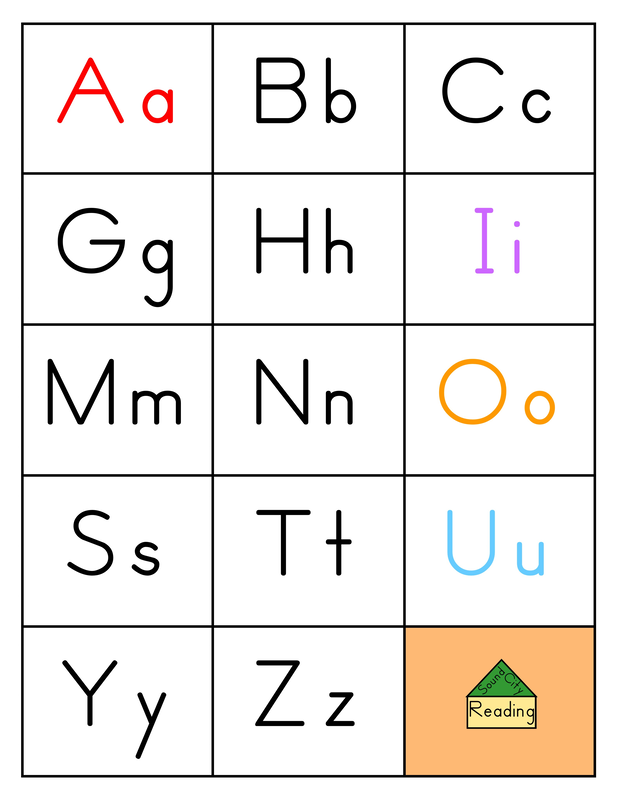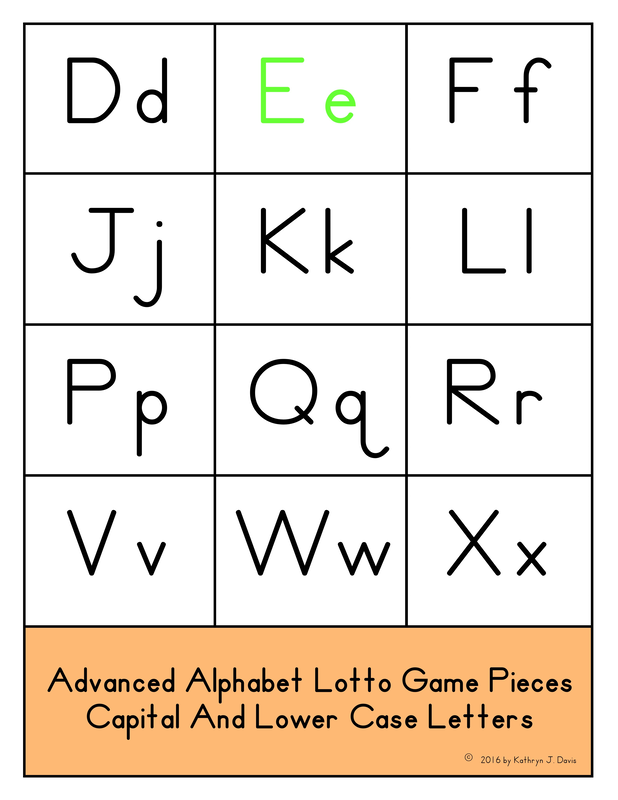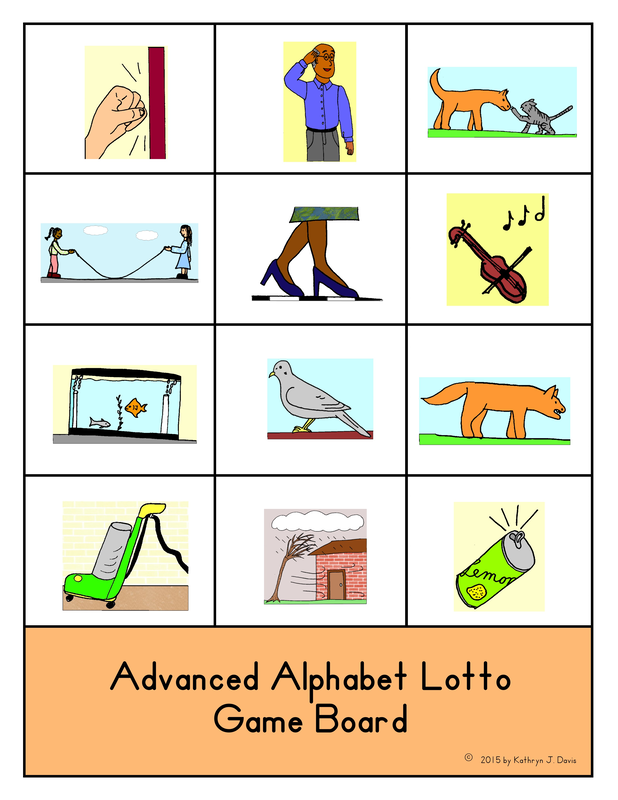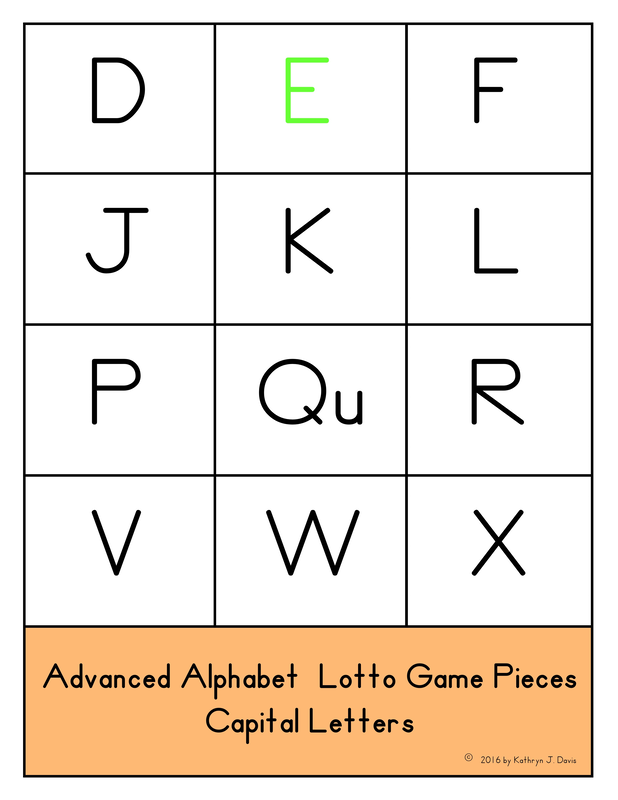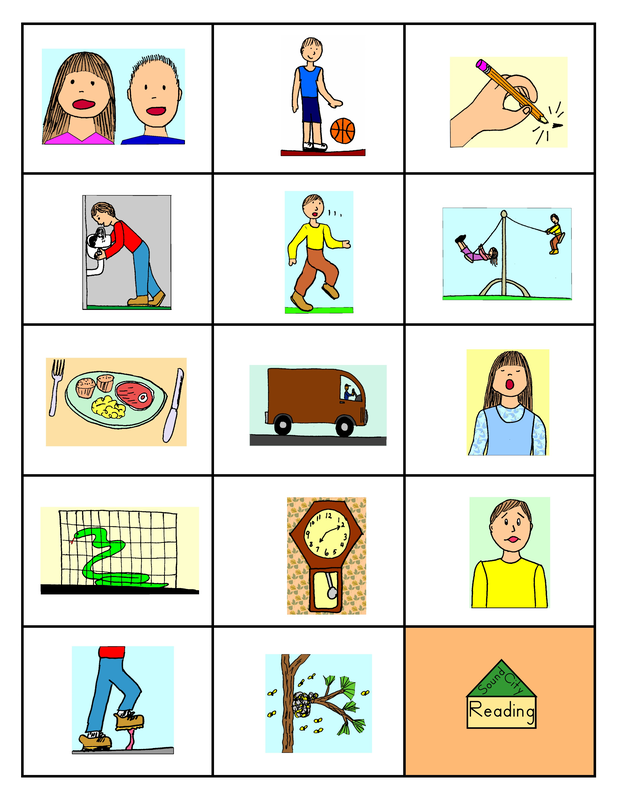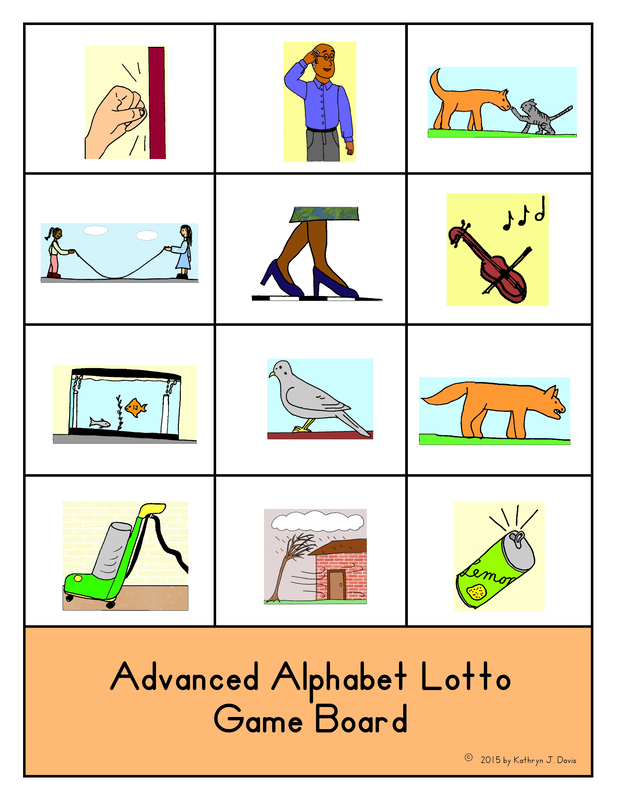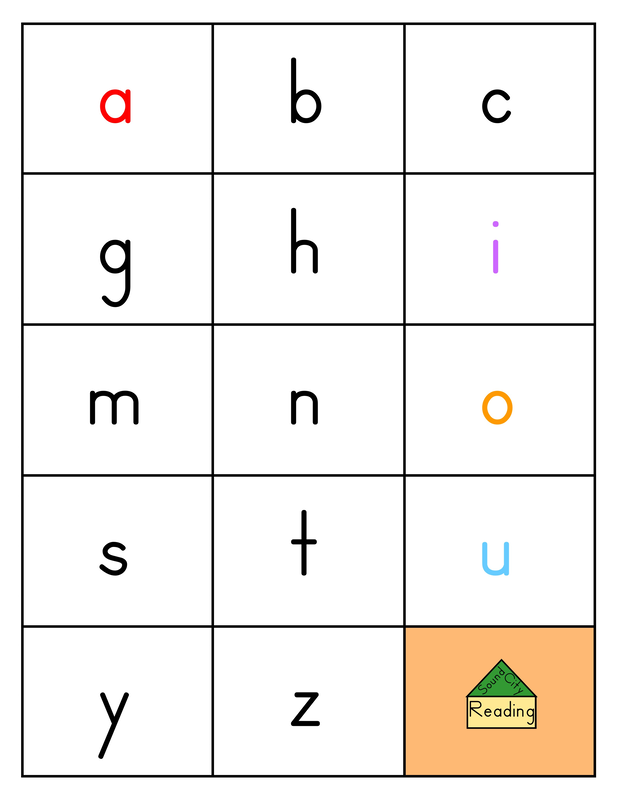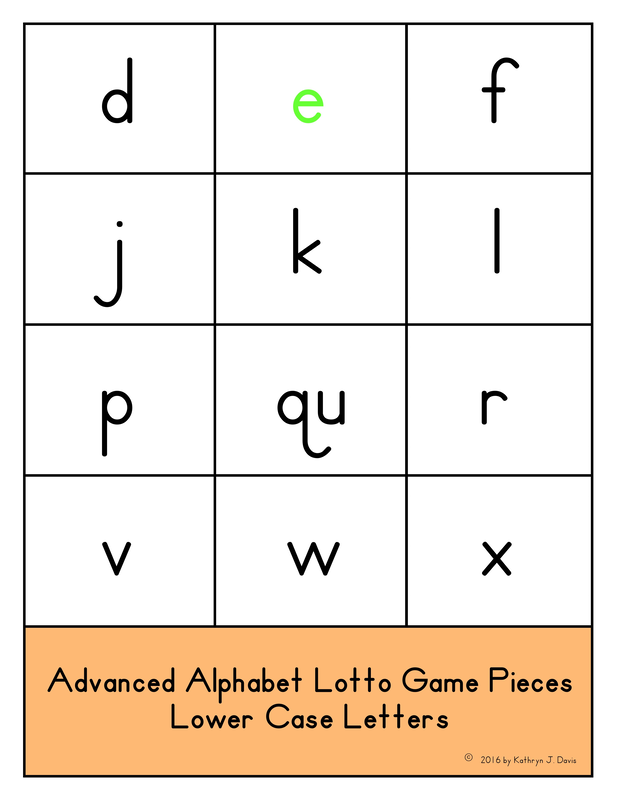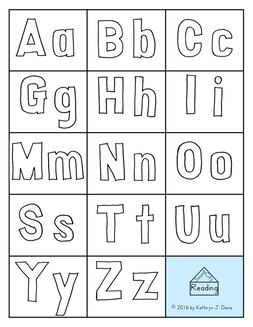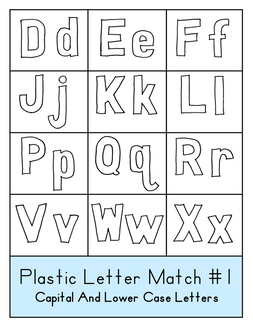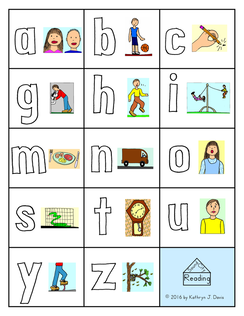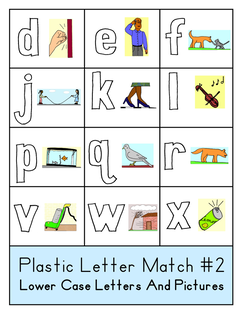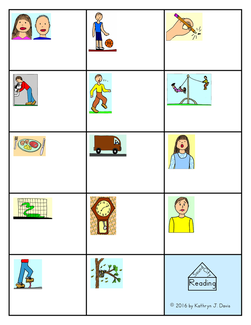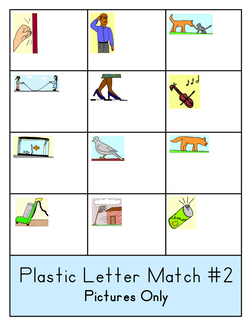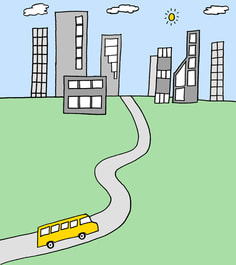Please scroll down to see PDF files for level one books, wall charts, sound cards, activities, and games.
Click on any of the green bars below to open the desired PDF file.
Click on any of the blue bars to open a compressed version of the file. The compressed version has exactly the same content but takes up less storage space.
Click on any of the blue bars to open a compressed version of the file. The compressed version has exactly the same content but takes up less storage space.
PDF Files - Level 1 - Learning The Alphabet
Student work is divided into two books. The first book teaches common letters that are the easiest to write: t, i, h, l, n, w, u, b, m, r, f, x, e. The second book teaches the letters that are more challenging to write along with less common letters: s, j, o, c, d, a, v, g, p, k, y, qu, z. Each unit includes one or two handwriting readiness pages and both large and small letter tracing pages. The two newest versions also include handwriting review pages.
- These books are designed for students who are learning the alphabet for the first time. They will work well with young students, but they may also be used with older students who need to learn the alphabet. I have not used these books with adult students who are learning English as a second language, but I think they would be a good starting point for these students.
- Information for the teacher is included in each book.
- Brief instructions for the teacher are included on each student page.
- The teacher works directly with the students as they complete the workbook pages. Students are not expected to do the pages independently.
- Each new alphabet letter is taught over a period of several days. Teachers may choose to change the pacing as needed, to make sure the students are able to complete the work successfully.
- In this program, a sound story is used to teach all of the speech sounds in the English language. At level one, just part one of the story is used. It introduces the sound for each level of the alphabet, including the consonant sounds, the five short vowel sounds, and the long ī sound. The instructional sequence is as follows: 1) the sound story is read aloud to introduce a new speech sound, 2) a sound picture is introduced which represents that sound, 3) the capital and lower case letters that represent the same sound in words are introduced. For example, one part of the sound story teaches the /rrr/ sound, which is shown with a picture of a growling dog. Students then learn that capital and lower case R r represent the same sound in words.
- Immediately after hearing a new section of the sound story, students learn the letter formation for the new letter by tracing large models of the capital and lower case letter on the chalkboard and in their workbooks. The letters are traced repeatedly, many times. Students say just the sound as they trace lower case letters. They say the sound and letter name as they trace the capital letters. They continue by tracing smaller capital and lower case letters in their books, while verbalizing the sound in the same way. The goal is to develop pencil skills and letter recognition while while learning correct letter formation and instant recall of the letter sounds. The letter names are also taught, but letter sounds are always emphasized.
- At level one, students are allowed to master the material gradually, as necessary. Even if a student does not yet remember every letter that has been taught, he or she can continue with the daily lessons. The use of arbitrary written shapes (letters) as sound symbols is a huge leap for many students. Continual daily review using sound charts, sound cards, activities, and games provides students with many chances to learn. A relaxed approach with constant modeling and support allows the students to learn at their own pace. It is of great importance that beginning students do not feel pressured or concerned about "getting the right answer." Learning should be approached as a joyful, exciting adventure. A game-like atmosphere does wonders for building interest, enthusiasm, and mastery.
- At this level students only have to trace the letters on the board and in their books. They are not required to write the letters independently on separate sheets of paper.
- These phonologic awareness and phonemic awareness skills are taught throughout the level: oral blending, segmenting, rhyming, and beginning sound awareness. The two newer versions of the books also teach ending sound awareness. As these important skills are gradually mastered, they will prepare students to begin reading and spelling words.
- Four print awareness lessons are taught in each book.
- In some versions of the Learning The Alphabet books, the letters are taught on blank pages, without lines. This makes it easier for students to attend to the letter shapes when studying the letters for the first time.
- Click on any of the sample pages shown below to enlarge them.
- Scroll down to see other level one materials: flashcards, wall cards, wall charts, activities, and games.
- Listen to the audio files and watch the video files to hear part one of the sound story and how to pronounce the letter sounds. Some of the letters may be pronounced in a way that is different from what you are used to. It is important for students to learn to pronounce these sounds correctly so that they will be successful when they learn to spell and read words phonetically. Practice until you can model all of the letter sounds confidently for the students.
- Click on the green bar below to open the pdf file for the baseline assessment. Much of the assessment will be beyond the beginner's knowledge. If students have already been exposed to the alphabet before starting this program, you may use it to assess how much of the alphabet they have already learned. Otherwise, wait until after students have completed level one and then use the assessment to measure their mastery of the alphabet letters and their sounds.
A Sound Story About Audrey And Brad
Level 1 Student Workbooks
This page has four different versions of the Learning The Alphabet books. They are all very similar. The two newest versions have color covers. If you are not sure which version to use, choose the newest version. If you have a preference for one of the other versions, you can use choose the version that you like the best.
- The Easy Handwriting version is the newest. It does not have lines on the handwriting pages.
- The Revised version does have lines on the handwriting pages.
- The older and oldest versions, which do not have color covers, are included for teachers who previously used these versions and want to continue using them.
- The older version includes extended instructions for the teacher in book one. These instructions will be helpful to the teacher regardless of which version is being used.
Learning The Alphabet With Easy Handwriting, Newest Version, With All Handwriting On Unlined Paper
- This is the newest, 2021 version of the Learning The Alphabet books.
- Both large and small handwriting letters to trace are on unlined paper.
- Both beginning and ending sound pages are included.
- Daily lesson plans and a sequence chart are included. There is a suggested three-day cycle for each new letter, but it can be flexible. Information is included about segmenting, working with plastic letters, and finding the students' "cutting edge."
Learning The Alphabet Revised, Previous Version, With All Handwriting On Lined Paper
- This is the 2019 version of the Learning The Alphabet books.
- Both large and small handwriting letters to trace are on lined paper.
- Both beginning and ending sound pages are included.
- Daily lesson plans and sequence charts are included. There is a suggested three or four day cycle for each new letter, but it can be flexible. Information is included for working with plastic letters.
Learning The Alphabet, Older Version, With Handwriting On Lined Paper
- This is the 2016 version of the Learning The Alphabet books.
- Both large and small handwriting letters to trace are on lined paper.
- The large letters to trace are thicker than the large letters in the newer books.
- Beginning sound pages are included. Ending sound pages are not included.
- An extended teaching guide telling how to complete each type of page is included in Book 1. The guide also includes suggestions about readiness and information about learning games that are available at level one. This guide will be helpful for teachers regardless of which level one version they are using.
Learning The Alphabet, Oldest Version, With Large Handwriting On Lined Paper, Small Handwriting On Unlined Paper
Instructions are included explaining how to do the segmenting exercises and how to work with plastic alphabet letters.
The large handwriting letters to trace are placed on lines. The small handwriting letters to trace are not placed on lines.
The large letters to trace are thicker than the large letters in the newer books.
Beginning sound pages are included, but not ending sound pages.
The large handwriting letters to trace are placed on lines. The small handwriting letters to trace are not placed on lines.
The large letters to trace are thicker than the large letters in the newer books.
Beginning sound pages are included, but not ending sound pages.
Level 1 Sound Charts
This set of large charts is used with Levels 1, 2, and 3. They should be placed on a bulletin board or a wall.
Display just the alphabet sound chart on the wall for students to review each day. Cover the letters that have not yet been taught with large sticky notes. At level one, you won't use the other sound charts from this set. You will add them at levels two and three.
Each time you teach a new letter from the sound story, remove the sticky note to show the letter on the chart. Point to the sound picture and the capital and lower case letters, model the sound, and have students repeat it in unison.
Every day, point to all of the letters that have been taught and have the students say the sounds in unison. Model and have students repeat the sound if needed.
|
Click on the green bar to open the PDF file for Level 1, 2, And 3 Sound Charts. The pages are printed on white 11 inch by 17 inch paper. The alphabet chart shown below is made with three pages. It is used at levels one, two, and three. This PDF file also includes a vowel chart that is used starting at level two and a chart with the "Umbrella Story" and the umbrella words A, a, and was, that is used at level three.
|
Alphabet Wall Cards With Both Letters And Sound Pictures
Print these cards on 8 1/2 by 11 inch white card stock. These alphabet wall cards work well in a row near the ceiling above the chalkboard. They show the consonants sounds and short vowel sounds. The long ī sound is also included because it is introduced in part one of the sound story. The sound pictures are in color. The vowels are printed in a specific color to show each short vowel sound. With these cards, students will be able to see the correct handwriting formation for each alphabet letter.
Short A = Red Short E = Light Green Short I = Light Purple Short O = Light Orange Short U = Sky Blue
Long I = Dark Purple
Short A = Red Short E = Light Green Short I = Light Purple Short O = Light Orange Short U = Sky Blue
Long I = Dark Purple
Level 1 Flashcards
There are four types of flashcards used at level one.
- Cards that show just the sound pictures from part one of the sound story.
- Cards that show both the sound pictures and the related capital and lower case letters.
- Cards that show just the lower case letters.
- Cards that show just the capital letters.
These cards will be used in a variety of ways, as described in the instructions for the teacher in the student books.
Each PDF file will make either two or four separate sets of flashcards. Print the cards on heavyweight cardstock. The pages will need to be cut apart to make the individual cards. A stack cutter works well if one is available.
If you prefer, you can make the alphabet cards yourself. Using 4" by 6" index cards, use a thick black marker to write large lower case letters for one set and large capital letters for the other set. Put one letter on each card.
Sound Story Picture Cards
Use these cards at all levels when you are introducing new sections of A Sound Story About Audrey And Brad. After reading a new section of the story to the students, show the sound picture card for that section. Have students say the sound for the picture. Then show all of the previously introduced picture cards, and have students say the sounds. If students can't remember a sound for a particular sound picture, model it and have students repeat it in unison.
This PDF file includes sound pictures for both part one and part two of the sound story. Only use the cards for part one of the story at level one. They introduce the alphabet sounds. The cards from part two will be used at a higher level.
It is important to remember that the sound pictures illustrate actual sounds from the story. They are not key word pictures.
Alphabet Cards - Capital And Lower Case Letters
Print these capital and lower case alphabet cards on pastel blue card stock. Use them to introduce new letters and review previous letters. Students say the sound for each letter, not the letter name.
Each day, show all of the lower case letters that have been taught, one at a time. Go in the order in which the letters have been introduced. Students give the sound for each letter in unison. For any letter that is not remembered, point it out on the alphabet chart on the wall, point to the sound picture and say the sound, and then show the card again and have students say the sound in unison.
There are two versions of letter cards, so that students will be able to recognize the letters in two different fonts. Print both sets of cards. Click on the green bars below to download the PDF files. Each PDF files makes four sets of cards. The printed pages will need to be cut apart to make the cards.
Working With The Picture Cards And Letter Cards In A Pocket Chart
- Place the last six to twelve picture cards that have been taught in a pocket chart or on a table along with the lower case letter cards that represent the same sounds. Have students match the pictures with the associated letters. Model and assist as needed. Students can also practice matching capital letters with the pictures.
- Students can practice matching lower case letters that have been taught with the related capital letters.
Alphabet Cards With Both Letters And Sound Pictures - For Part One Of The Sound Story
These card sets have both the alphabet letter and the related sound picture on the same card. The pictures are from part one of the sound story, which teaches the alphabet. They are useful for students at level one who are learning new alphabet letters for the first time. Students can look at the sound picture on each card to help them remember the letter sound.
There are two different sets of cards that show the part one pictures and alphabet letters on the same card. The first set is printed on legal sized card stock in landscape mode. The second set is printed on letter sized cardstock in portrait mode. You can use whichever set you prefer.
Part One Cards Printed On White Legal Sized Cardstock
There are two cards printed on each page. The pages will need to be cut to separate the cards.
Part One Cards Printed On White Letter Sized Cardstock
There are two cards printed on each page. The pages will need to be cut to separate the cards.
Level 1 Games And Activities
Students work in small groups directly with the teacher to do these activities. The teacher provides guidance and support at all times. While they are simple to do, the hands-on nature and social aspect of the activities create a high level of interest in the students. This is where a lot of learning for beginners takes place.
Alphabet Lotto
|
Click on the green bar to open this PDF file. It includes Alphabet Lotto and Advanced Alphabet Lotto.
|
This is the simplest activity for students who are beginning to learn the letters of the alphabet. Six different versions of the game are included in the PDF file. Each two-piece game board will need to be taped together in the middle. Leave a small space between the pages so that they can fold. The game pieces will need to be cut apart and stored in separate labeled envelopes or clear bags.
|
Alphabet Lotto
Advanced Alphabet Lotto
Plastic Letter Match Activity
Students match capital or lower case plastic letters with letter outlines and/or sound pictures on three types of game boards. Instructions are included.
Apple Alphabet Game
|
Click on a green bar to open the desired PDF file. Instructions are included.
|
In this activity students take turns selecting apple cards which have been placed face down on a table. Each apple shows a letter of the alphabet. If a student can say the correct sound for the letter, he or she can place it on the table above his apple basket. The student with the most apples at the end of the activity wins.
The sequential sets can be used with students who are still learning the letters of the alphabet. A new set of apples is used for each new group of letters introduced. The other set has all the letters from A to Z, for students who have studied the entire alphabet. |

